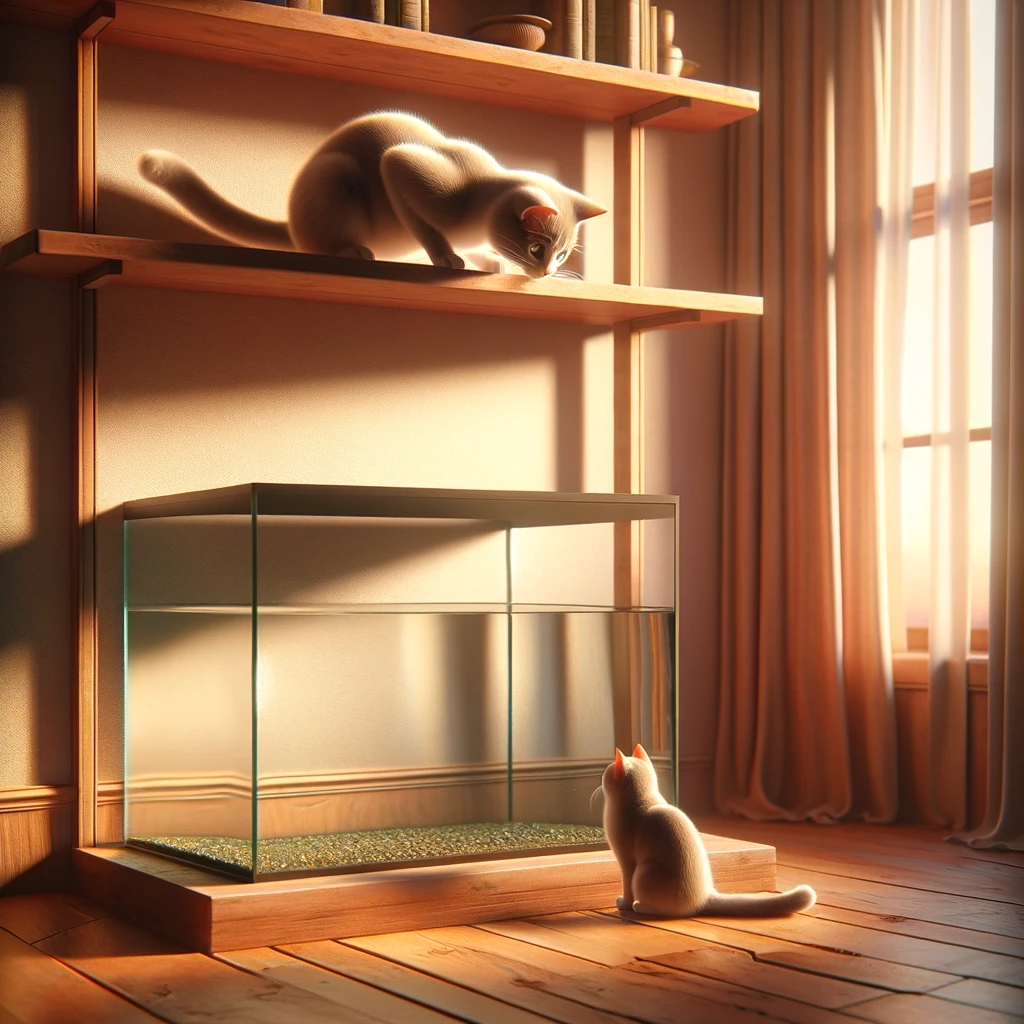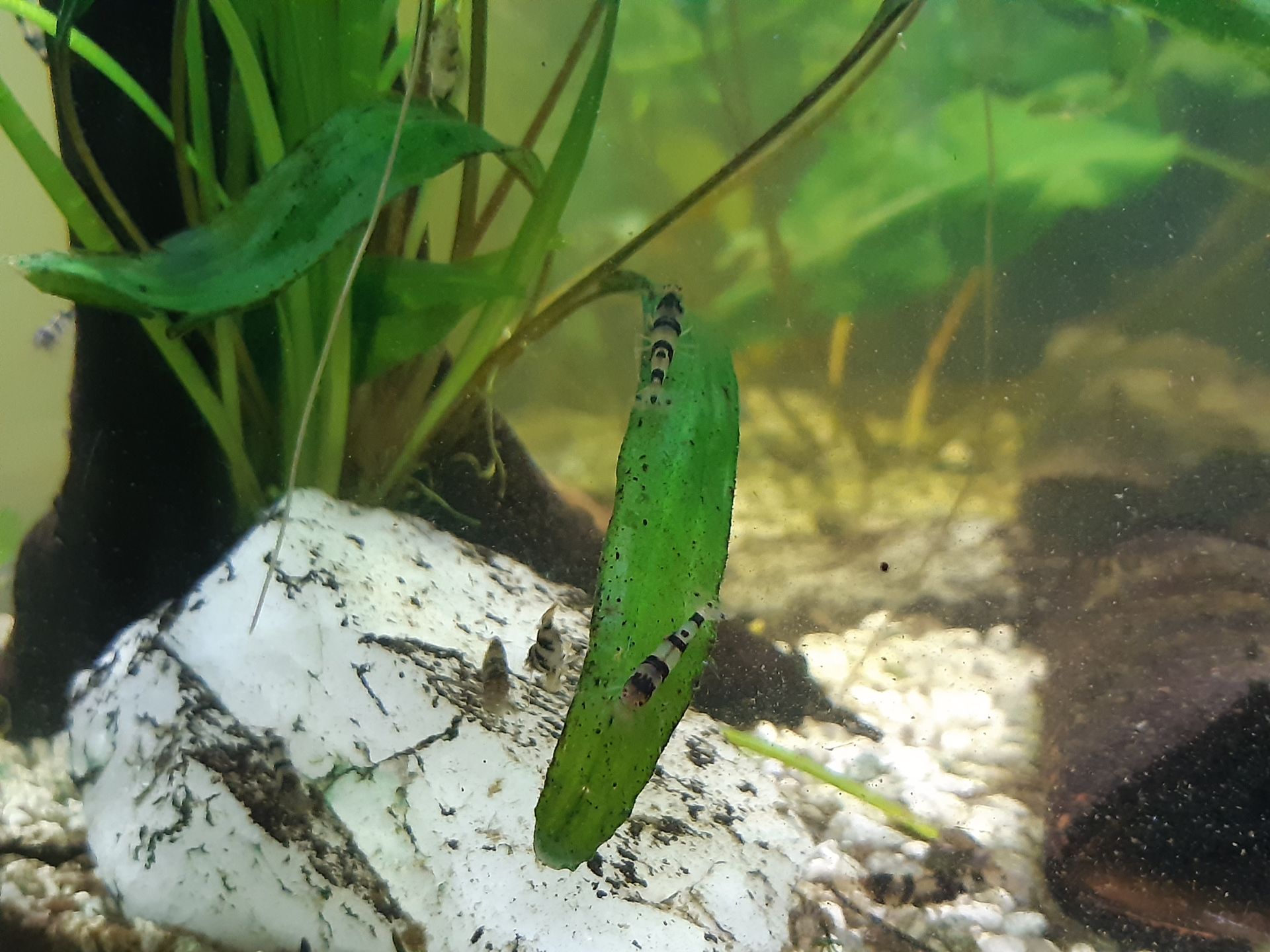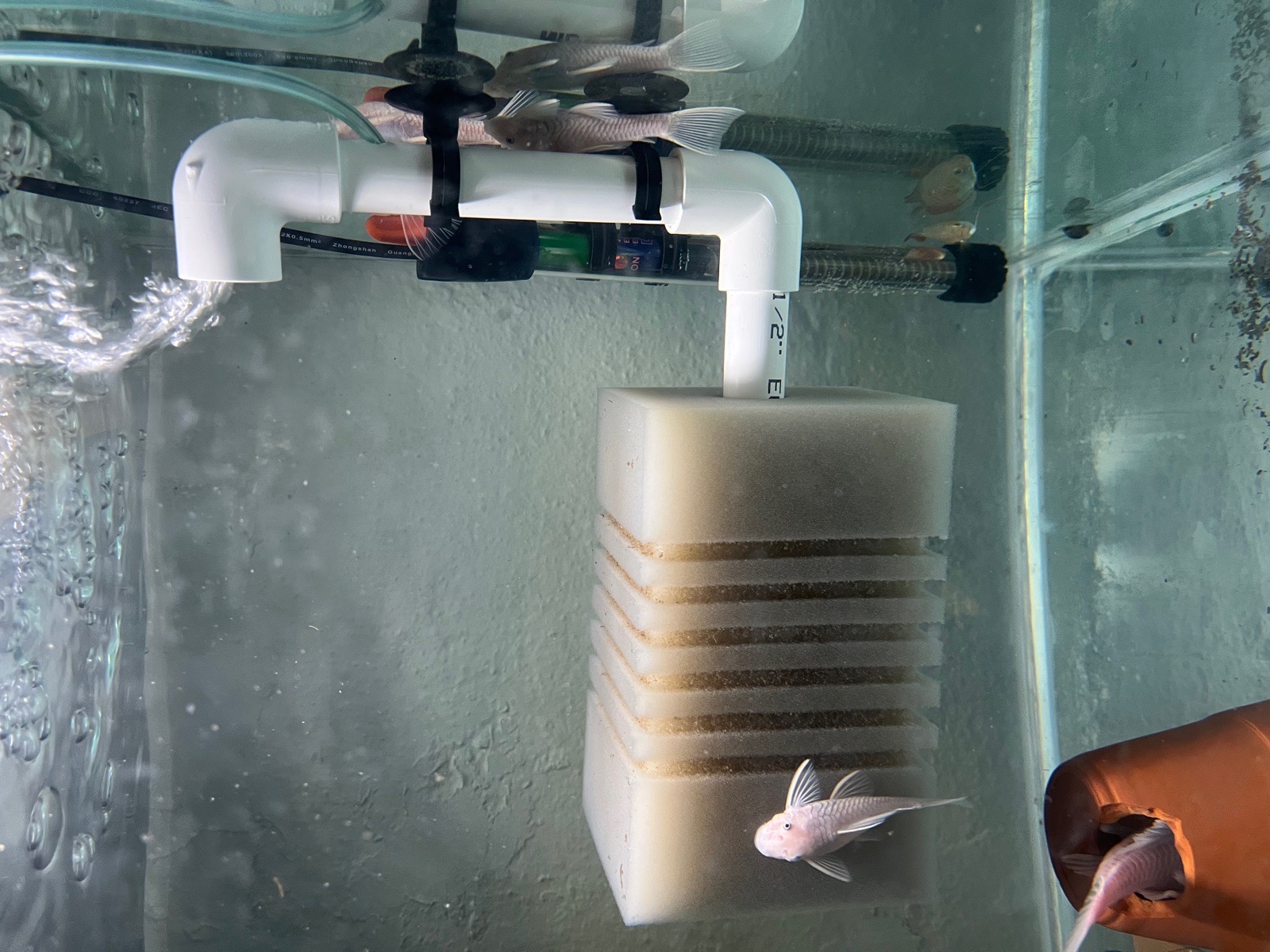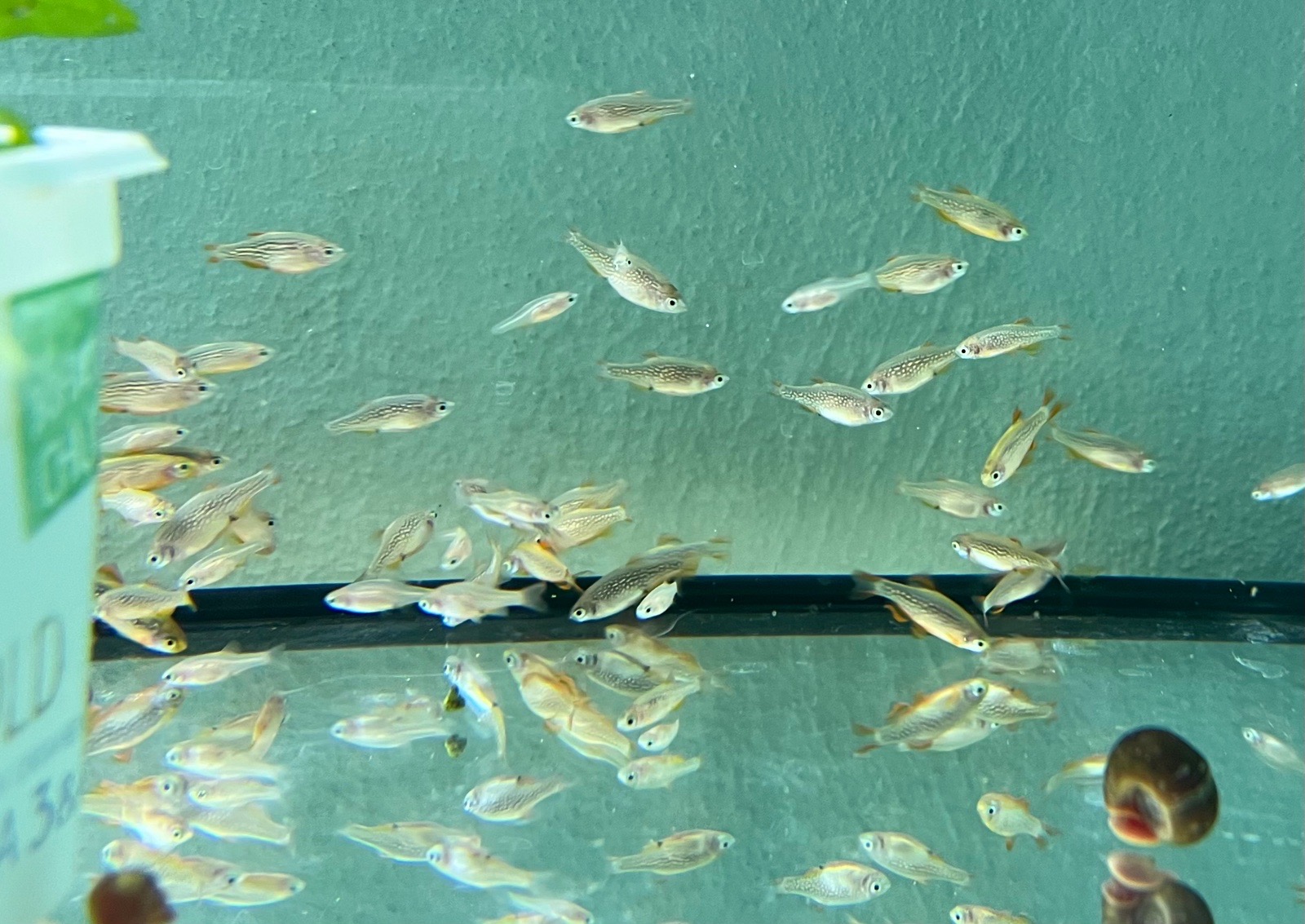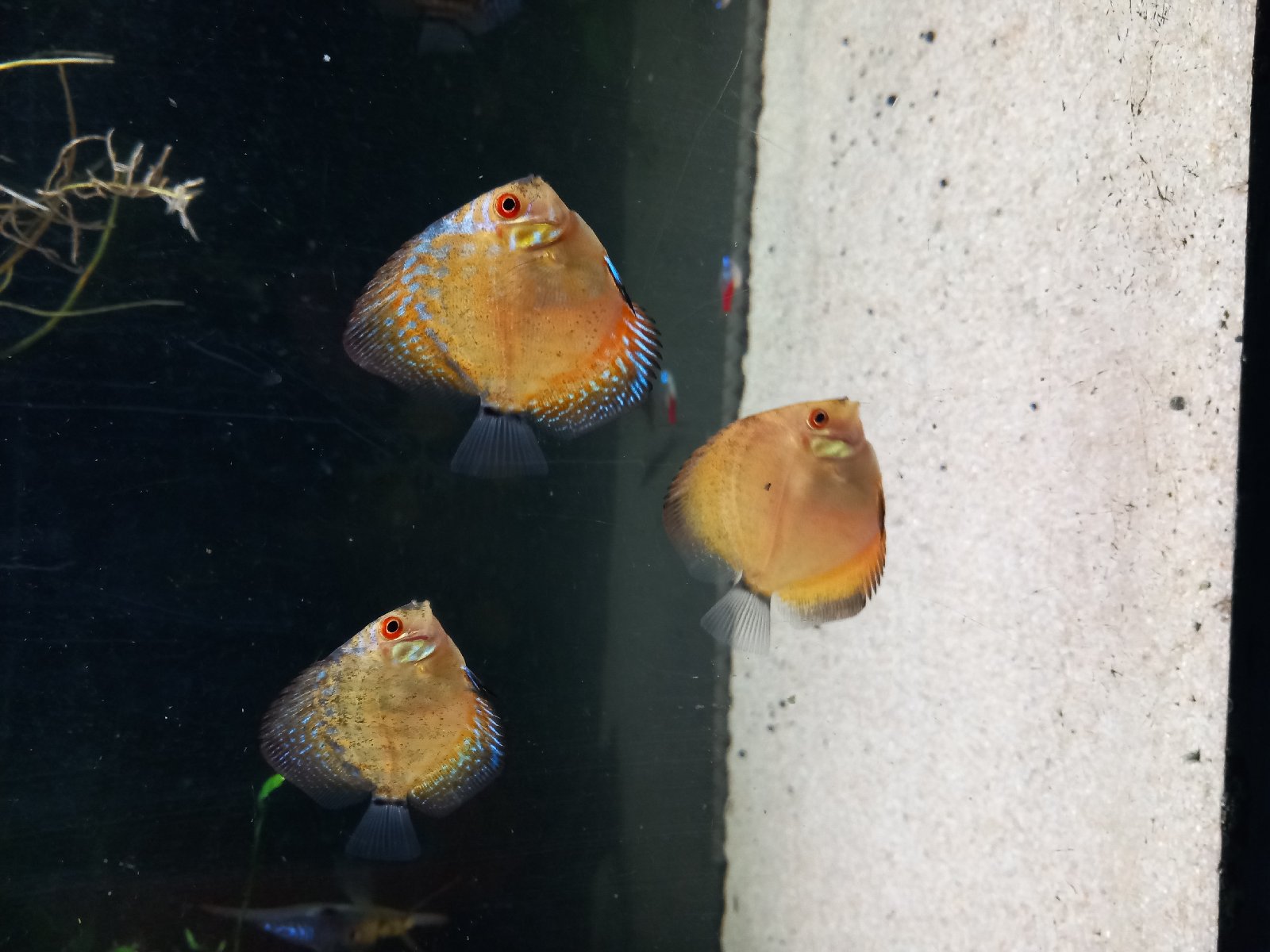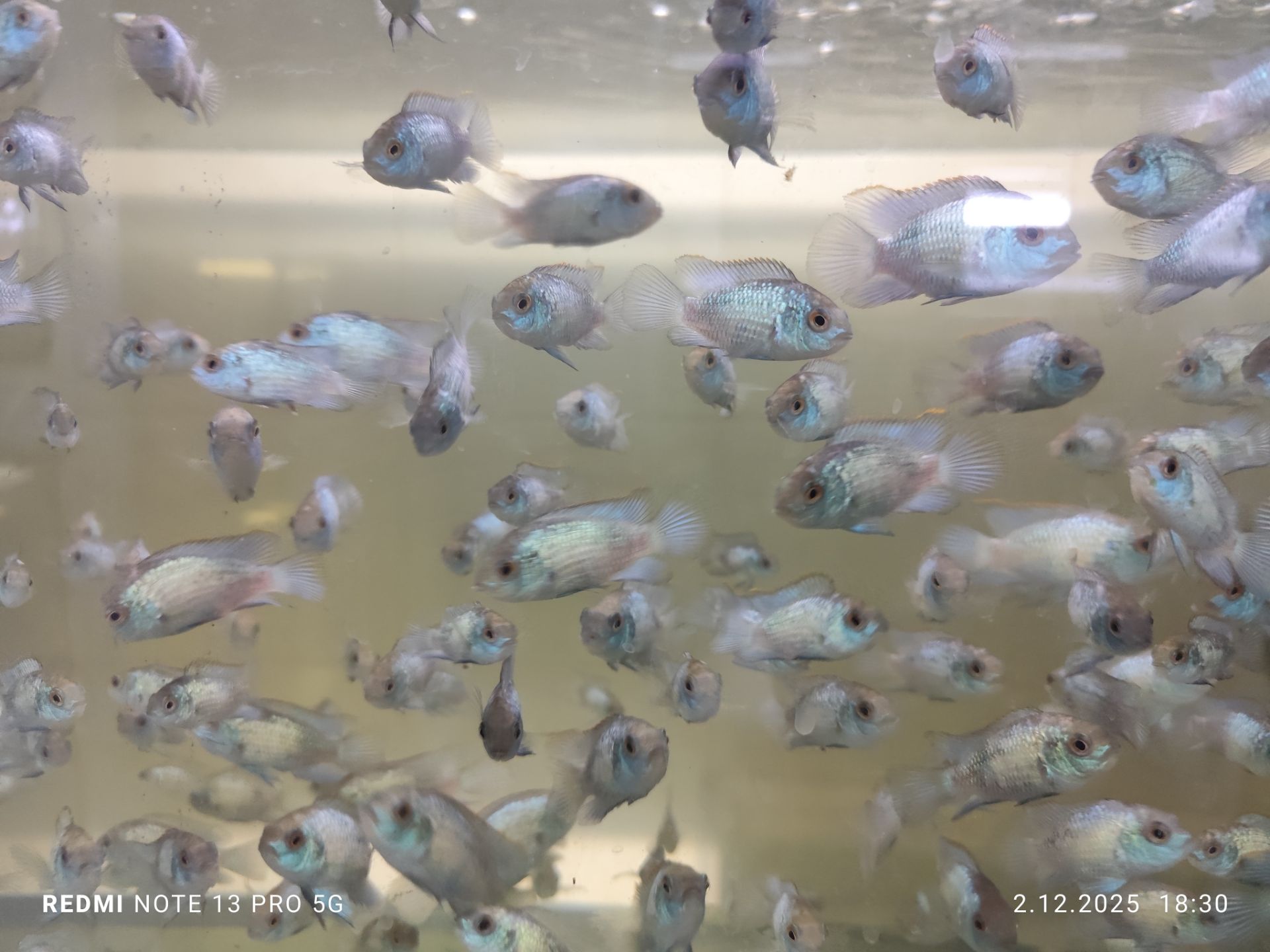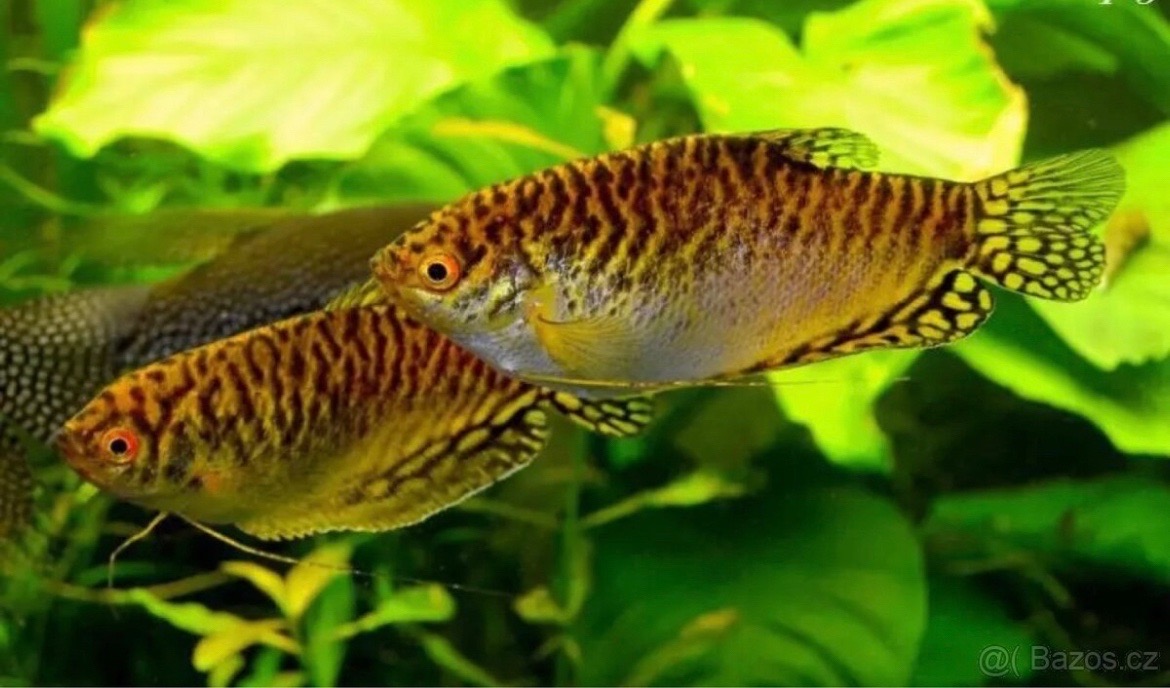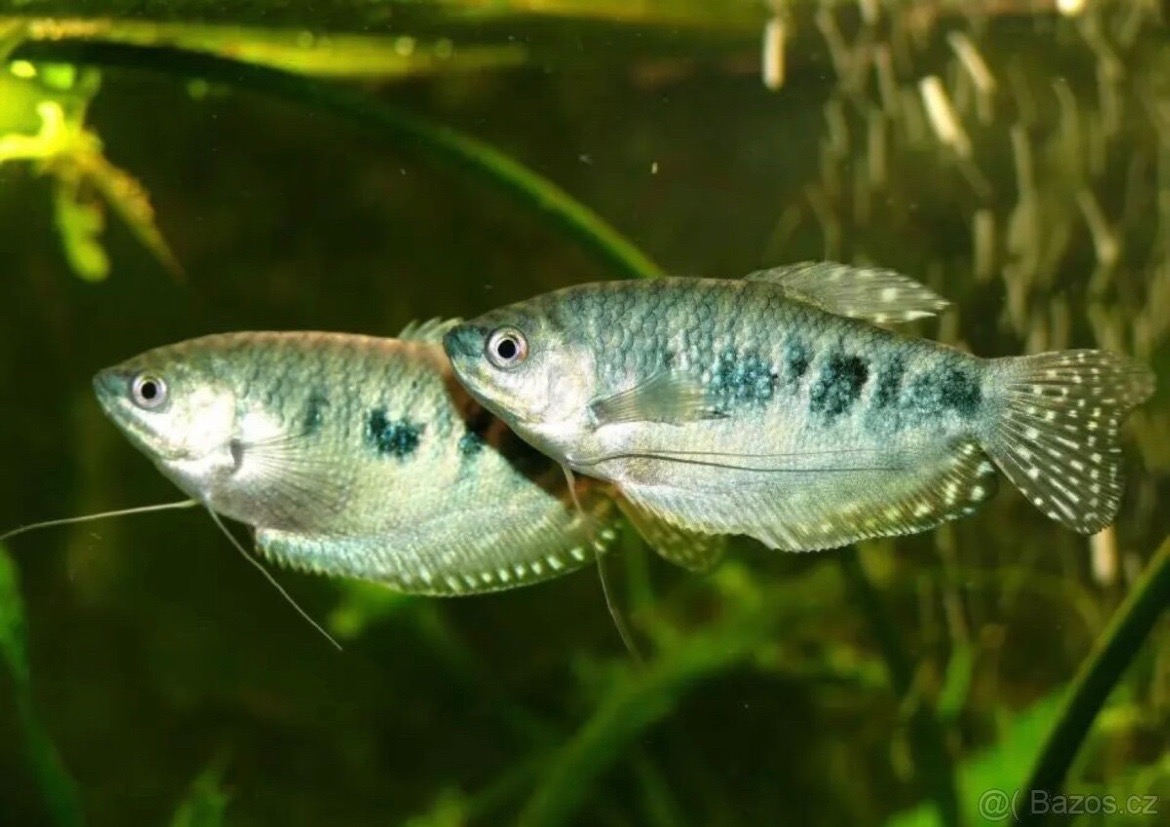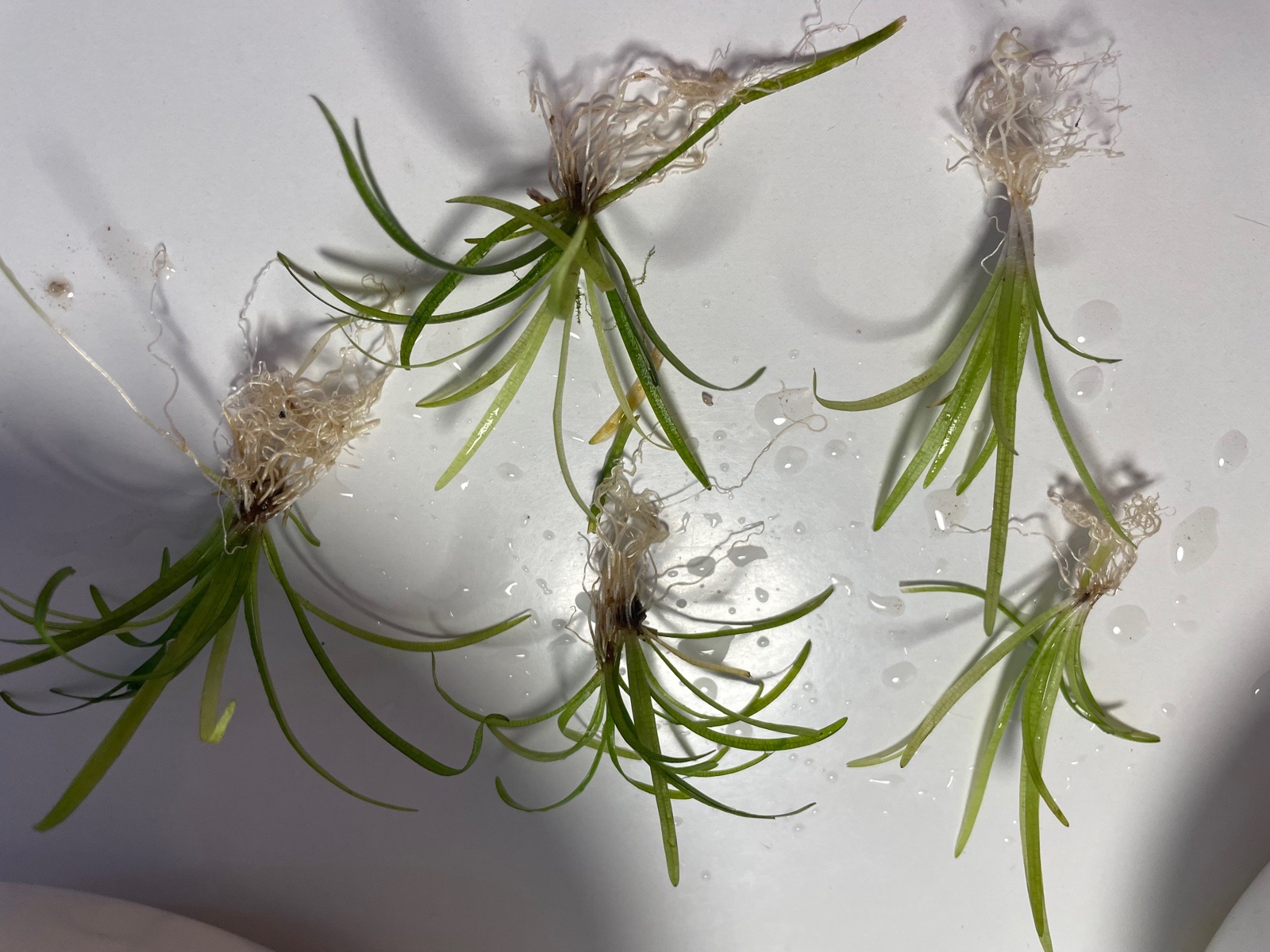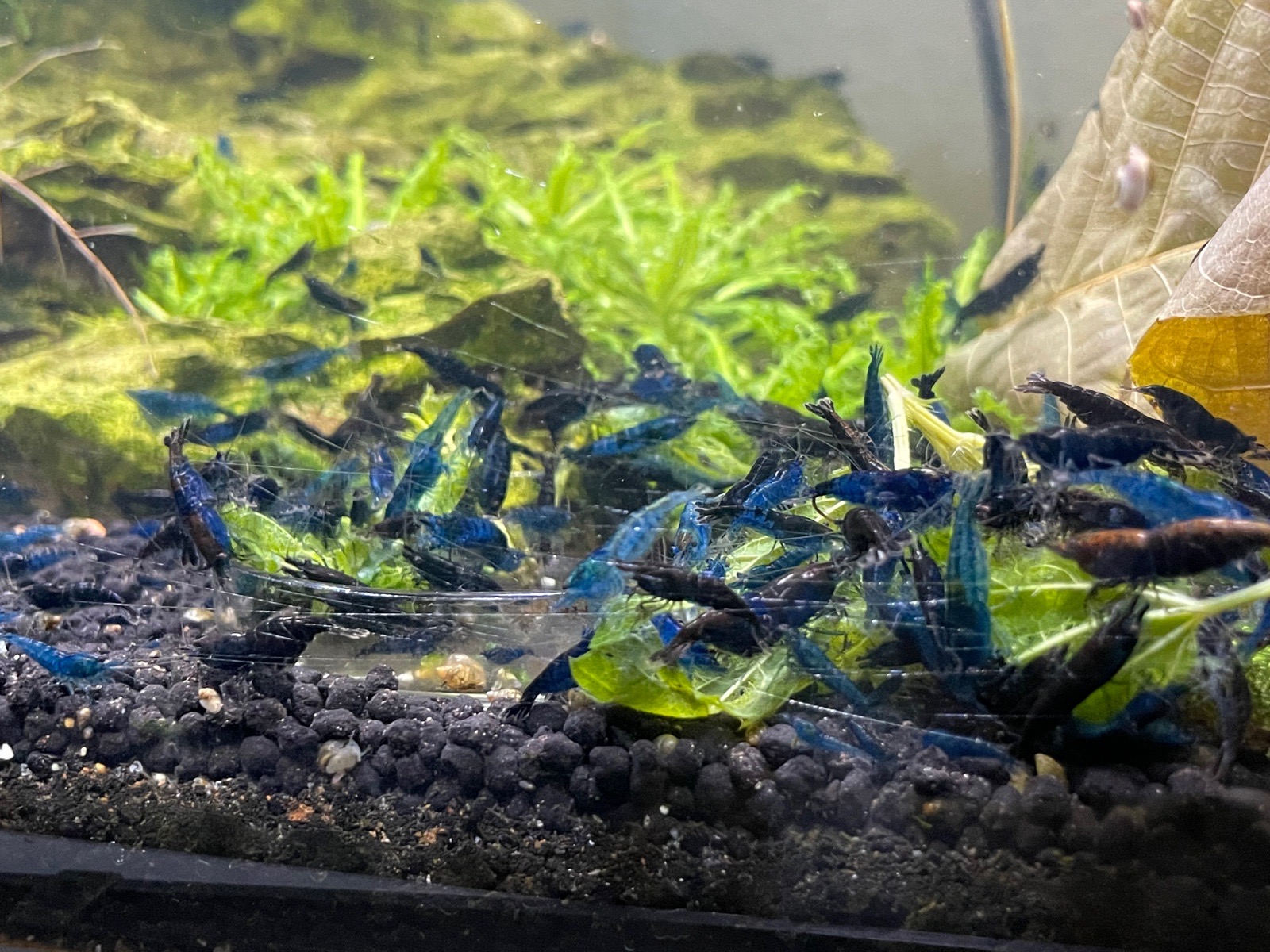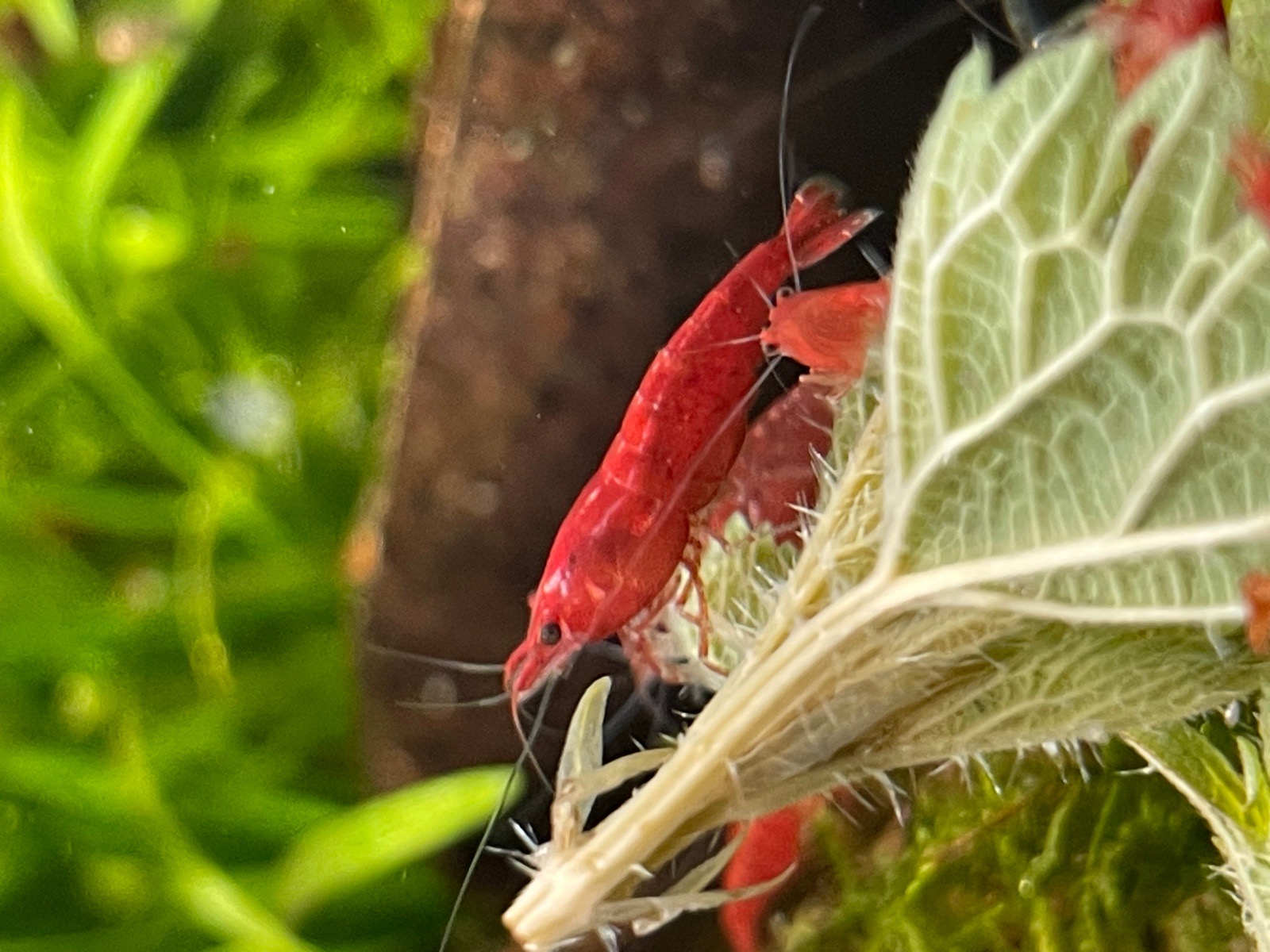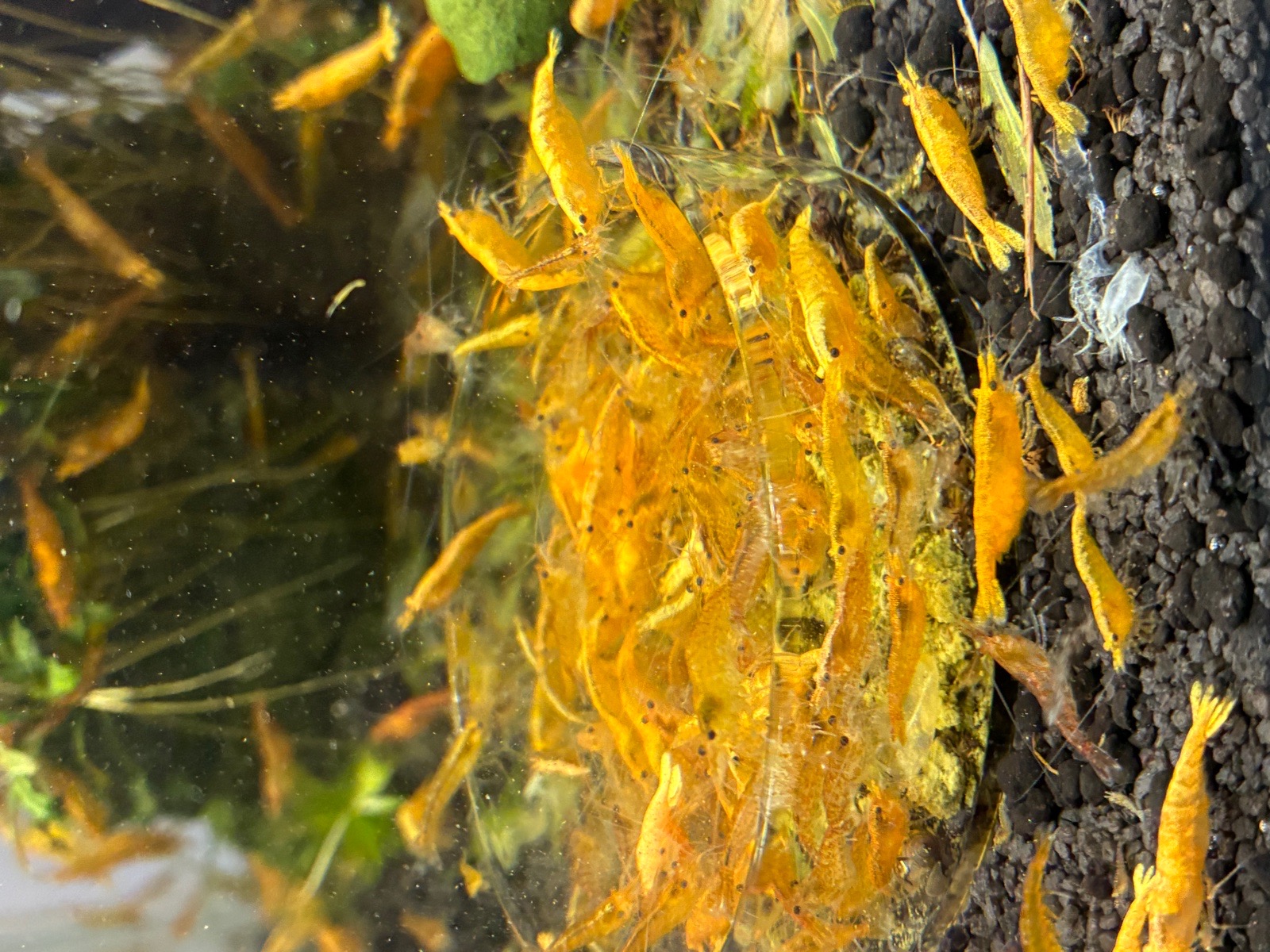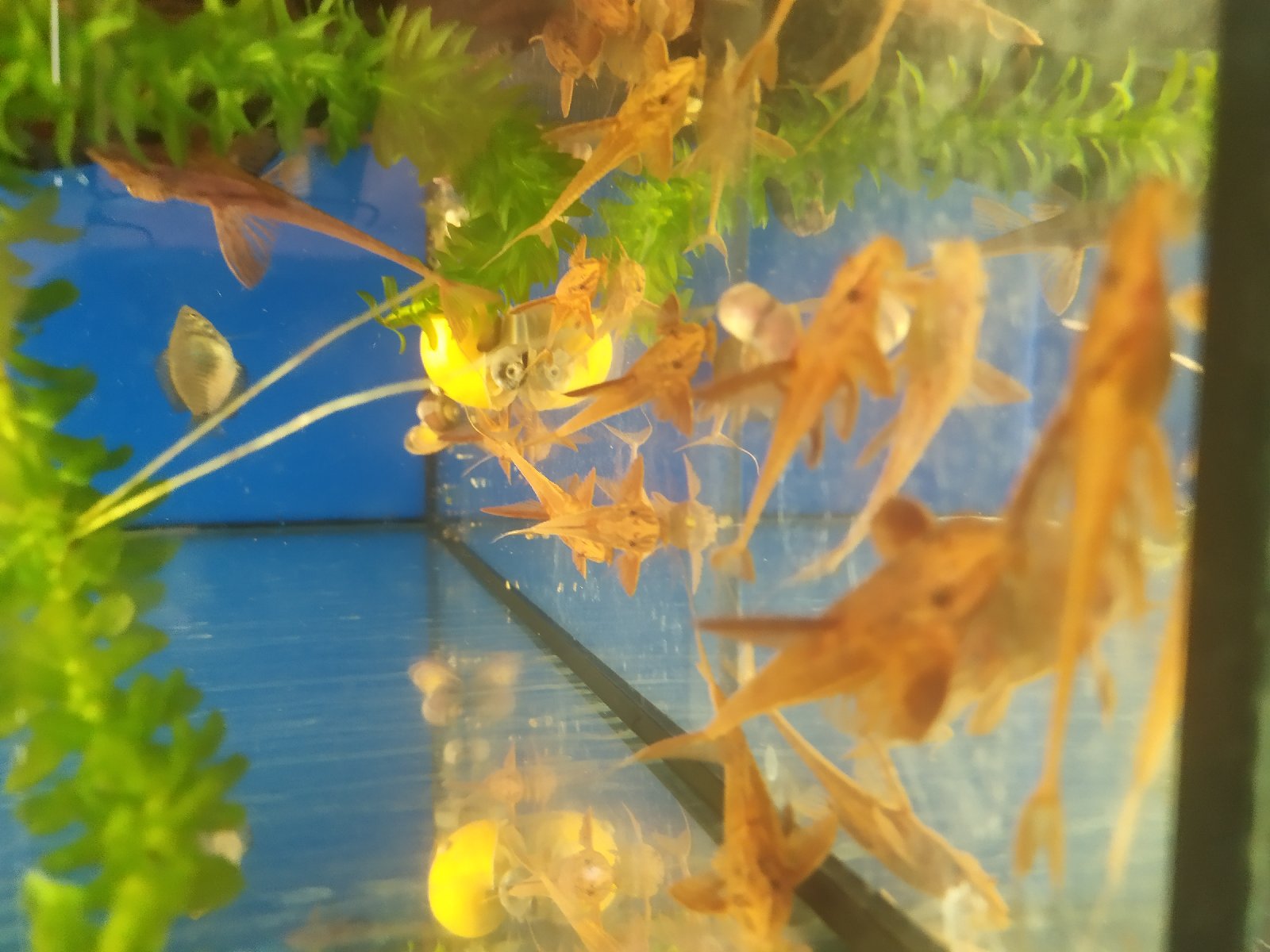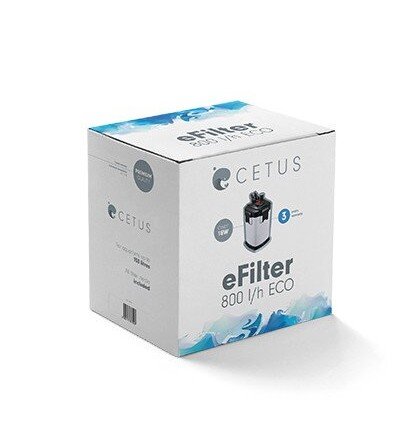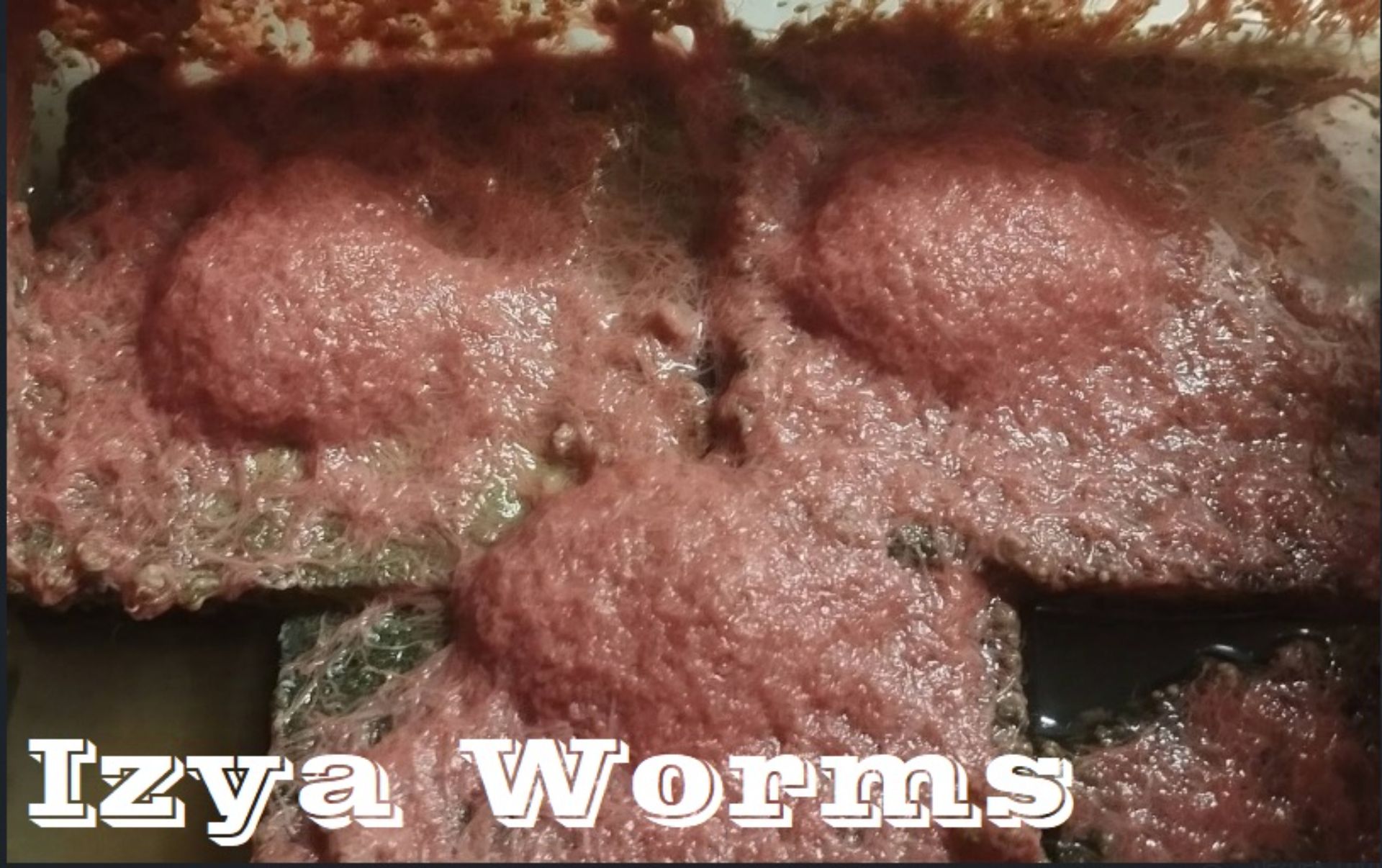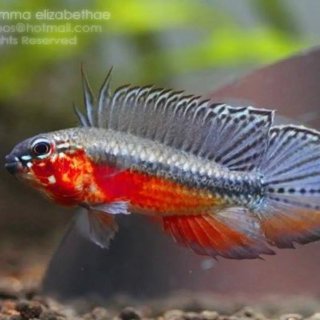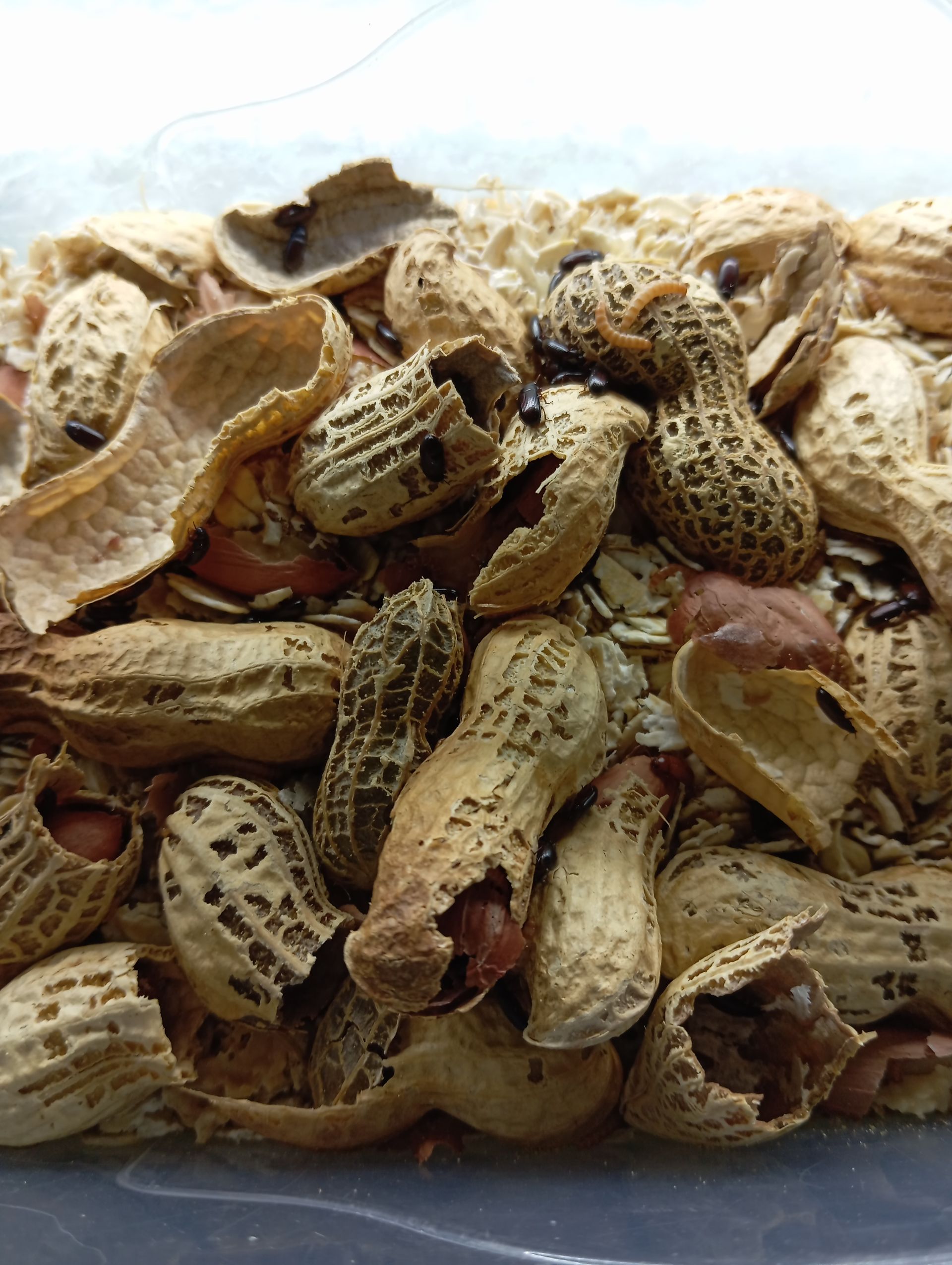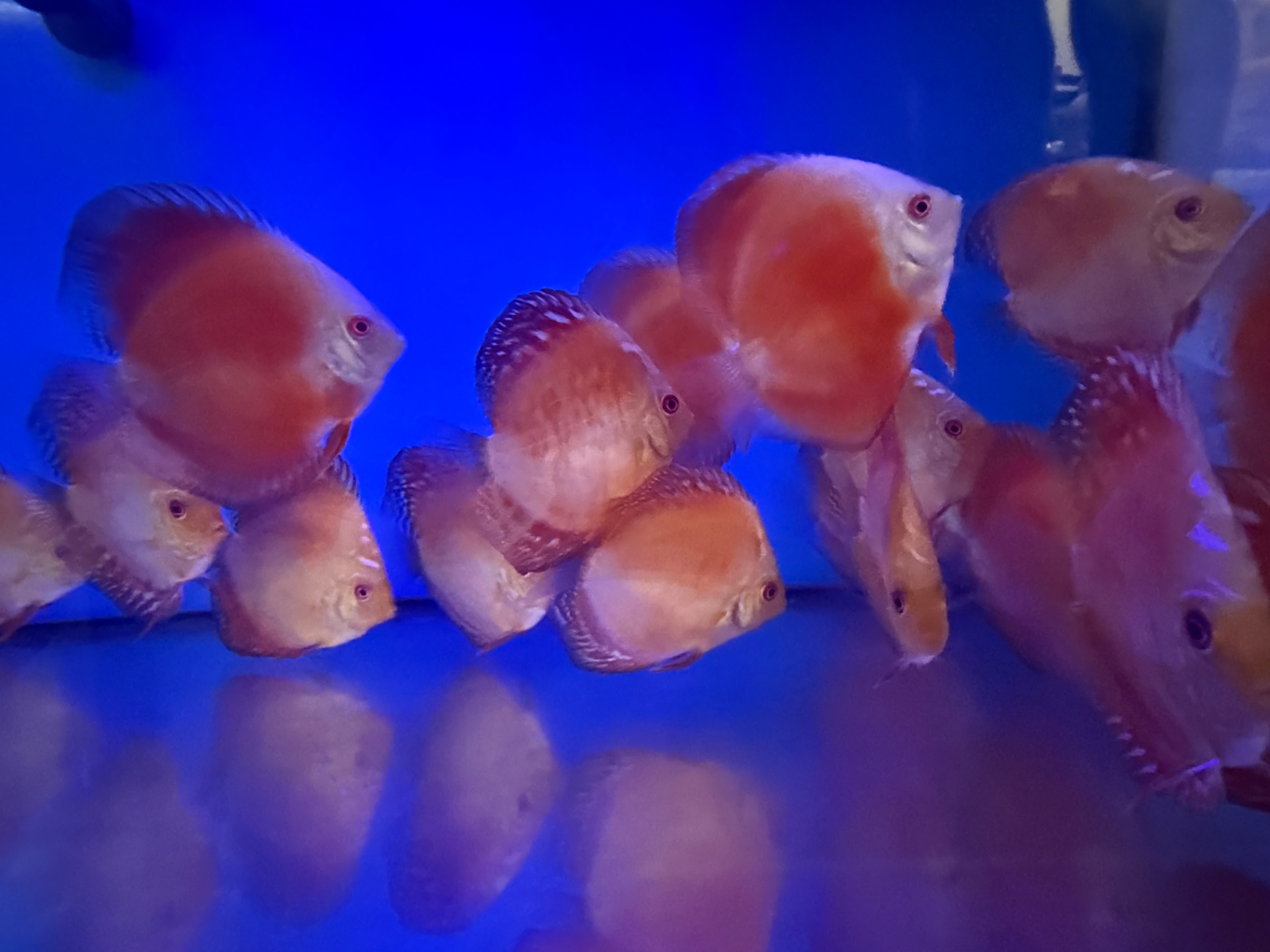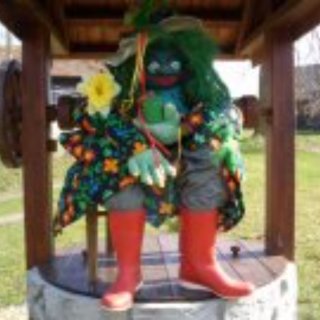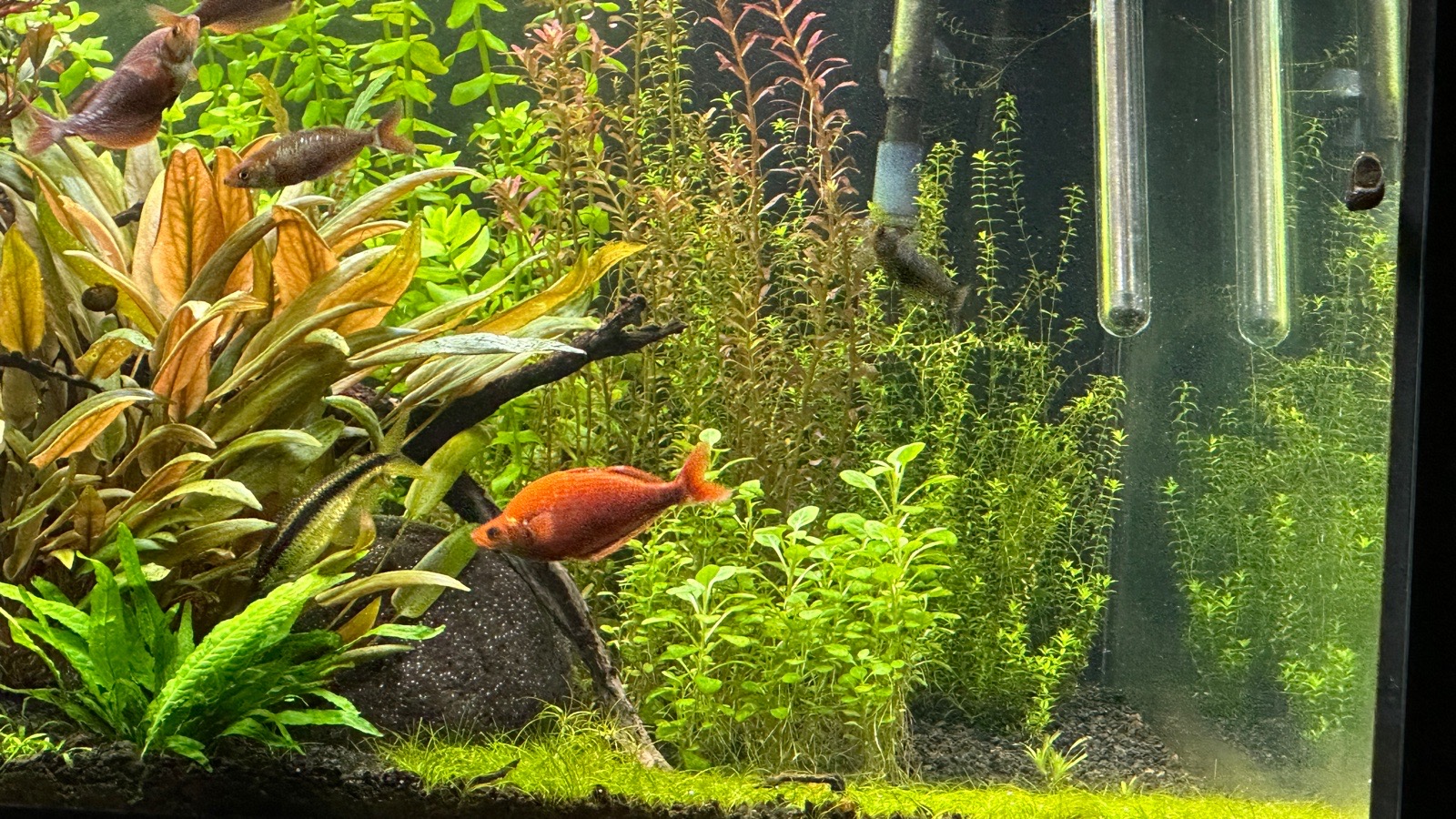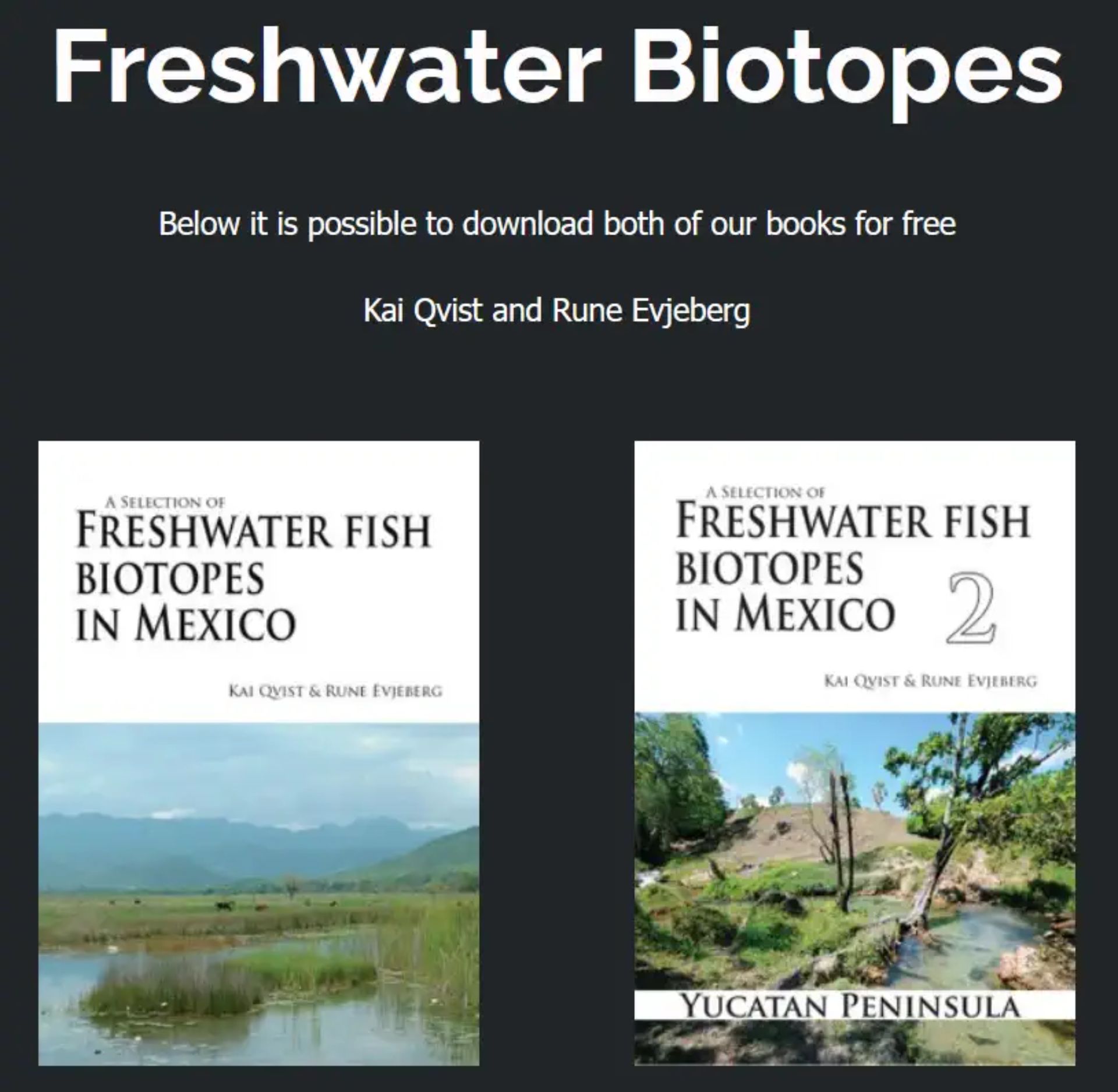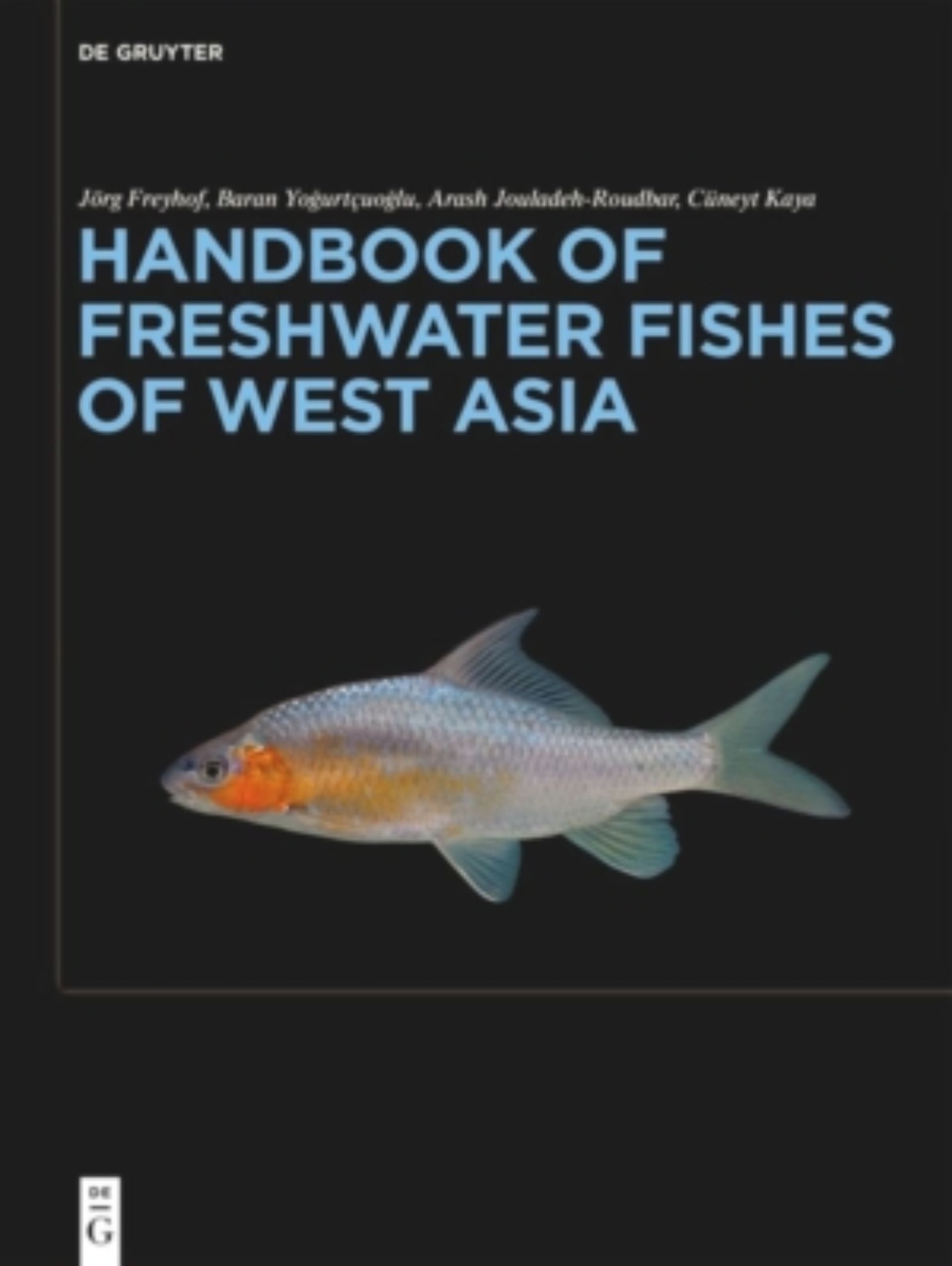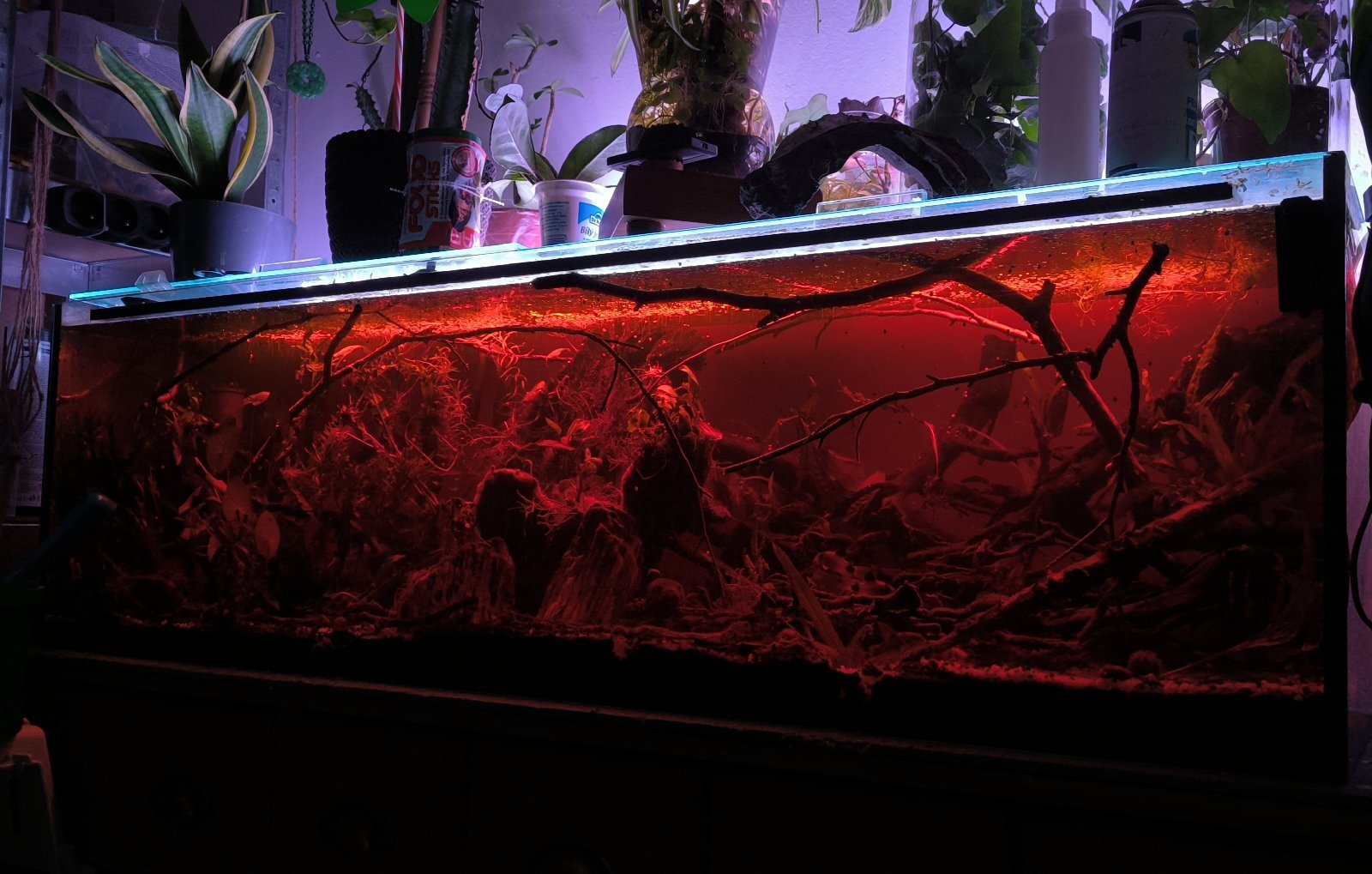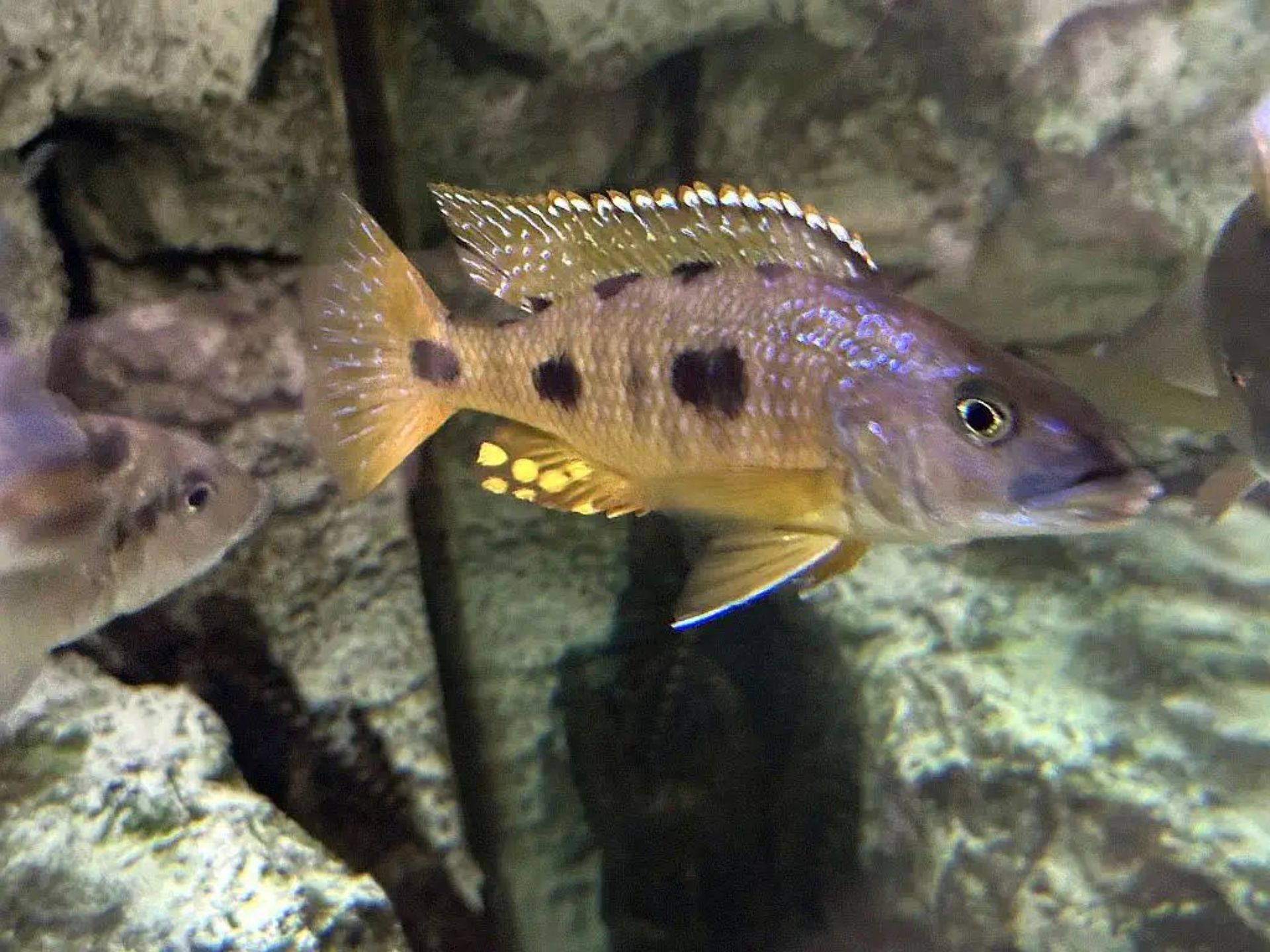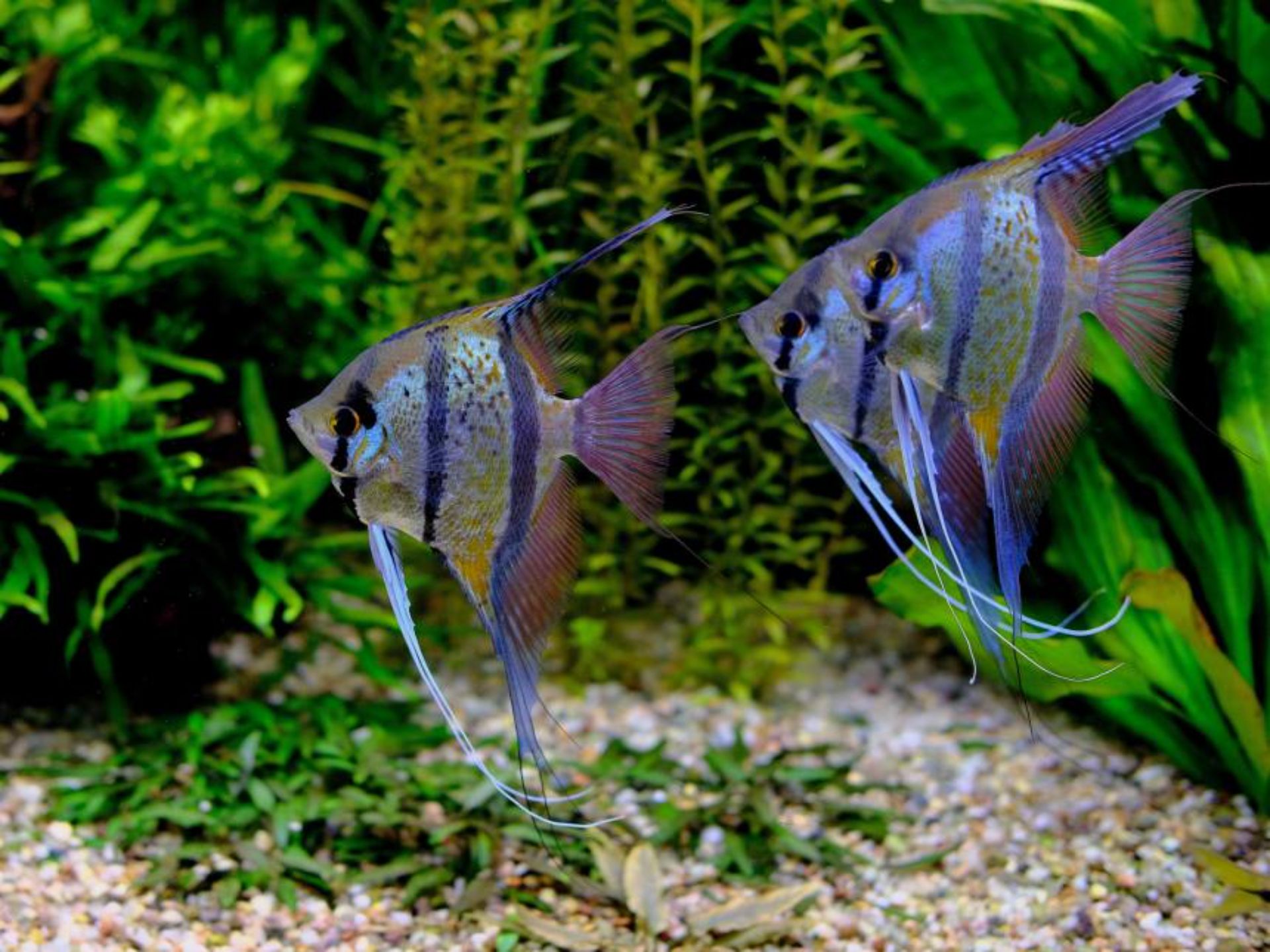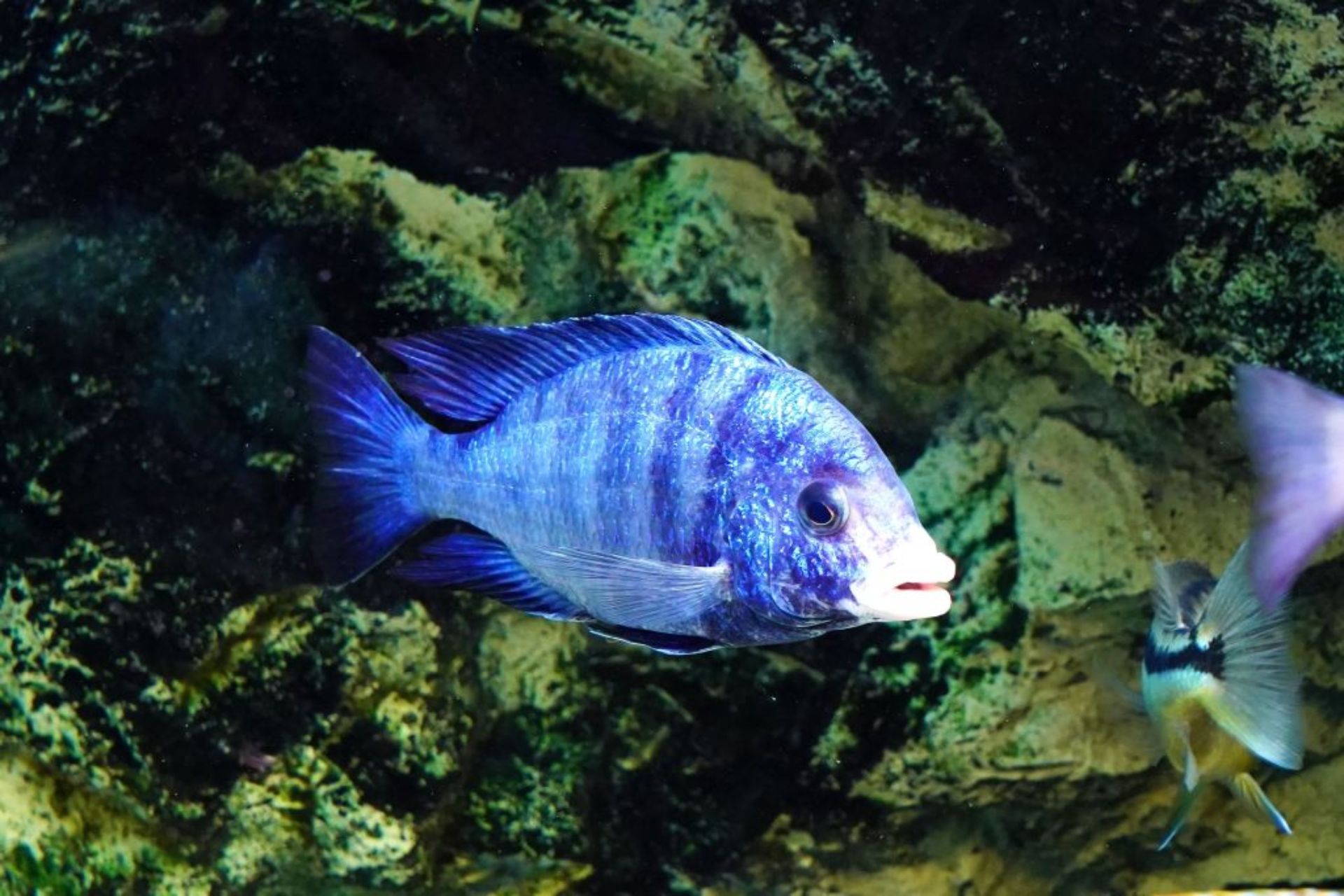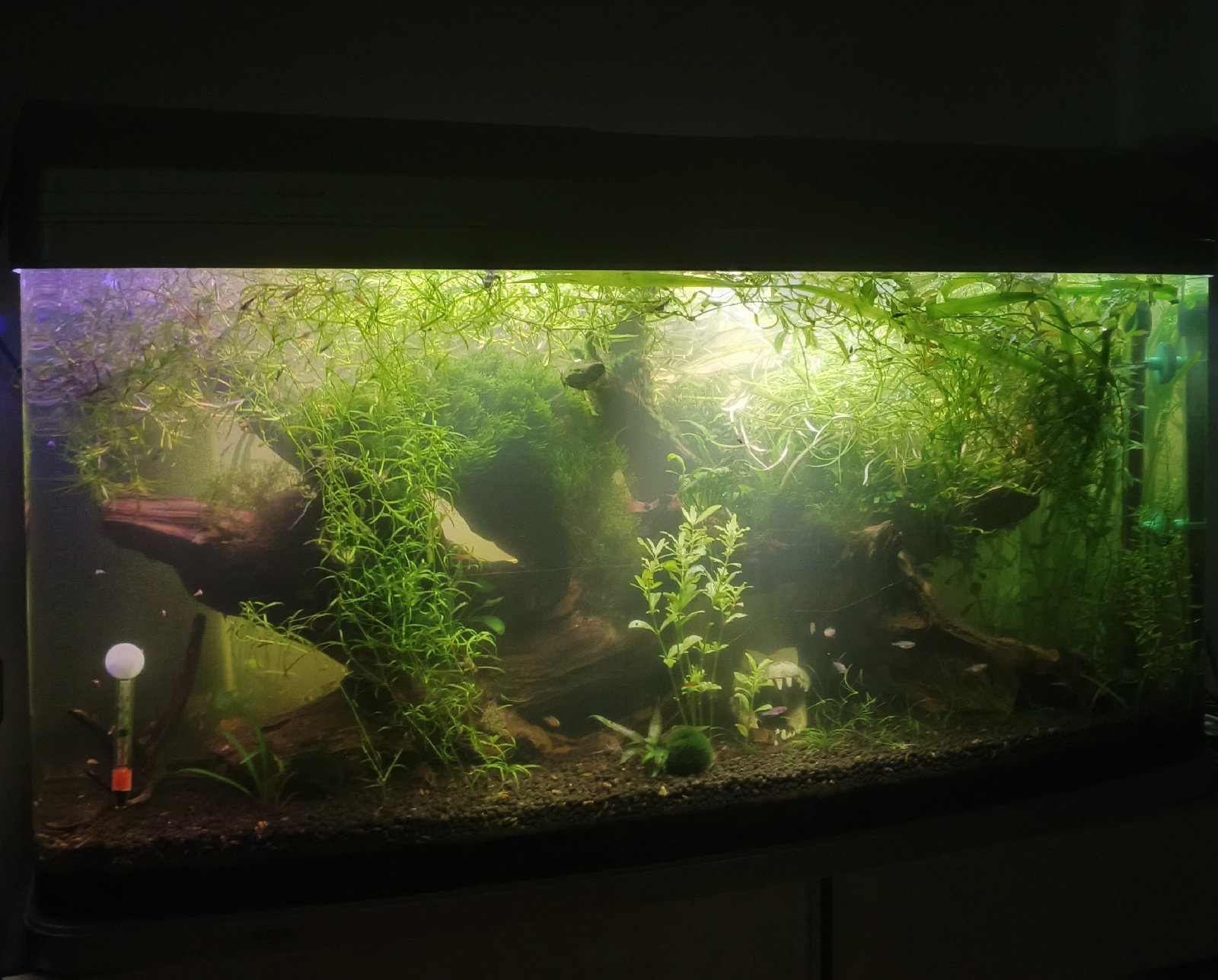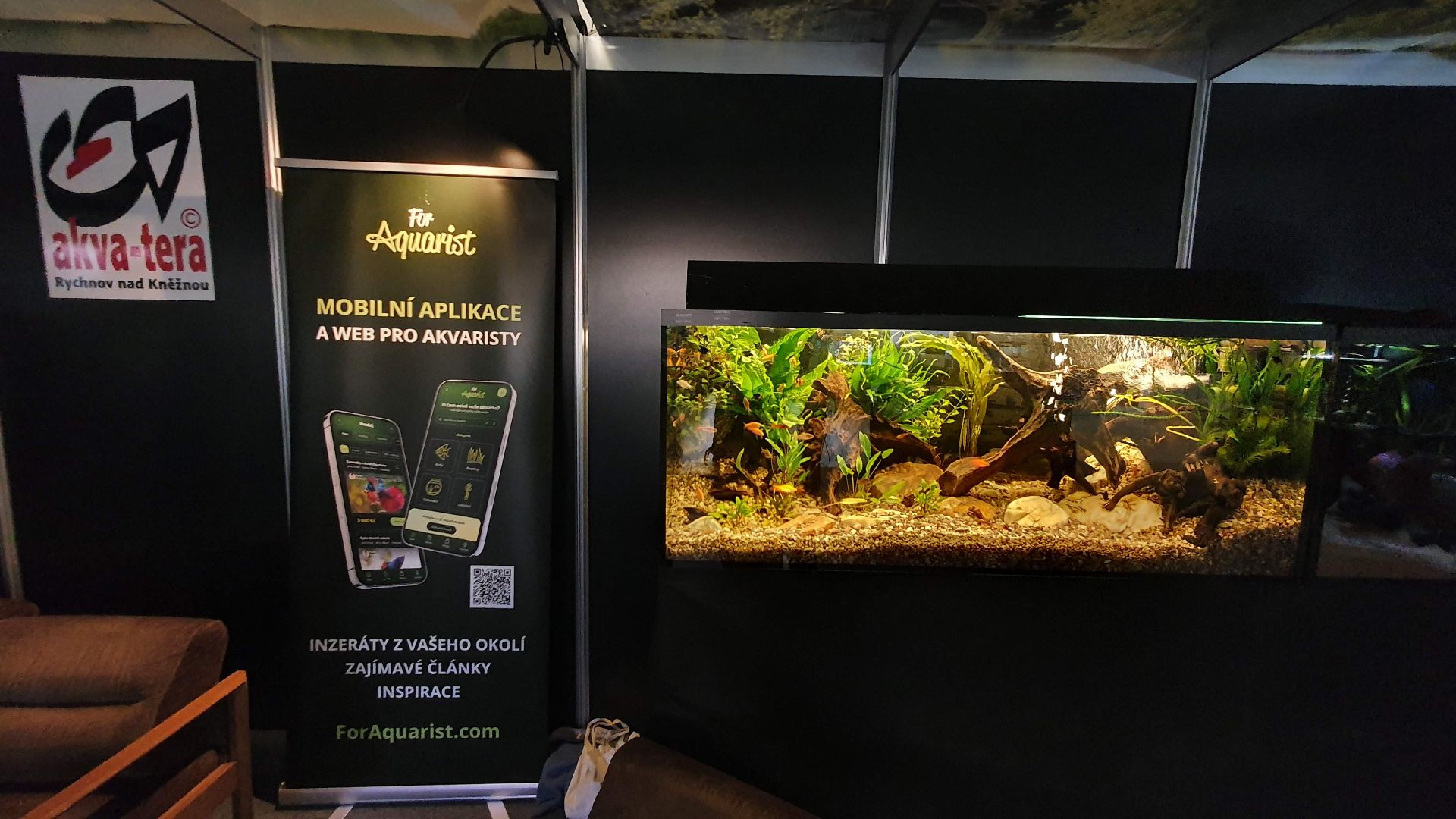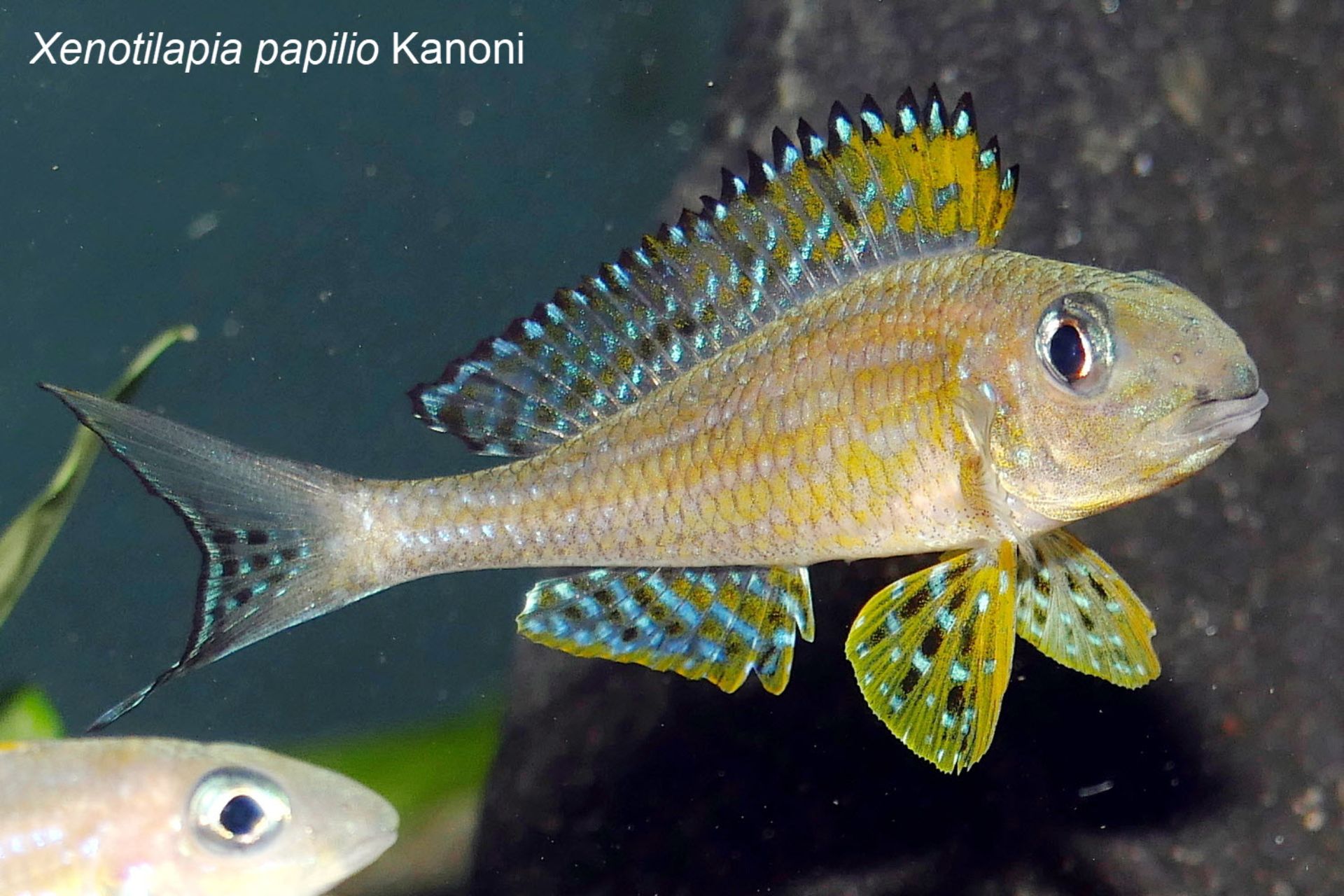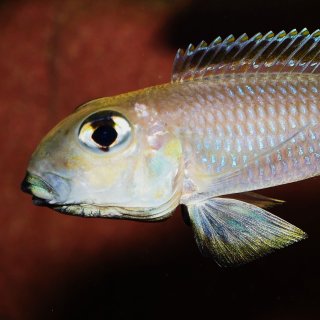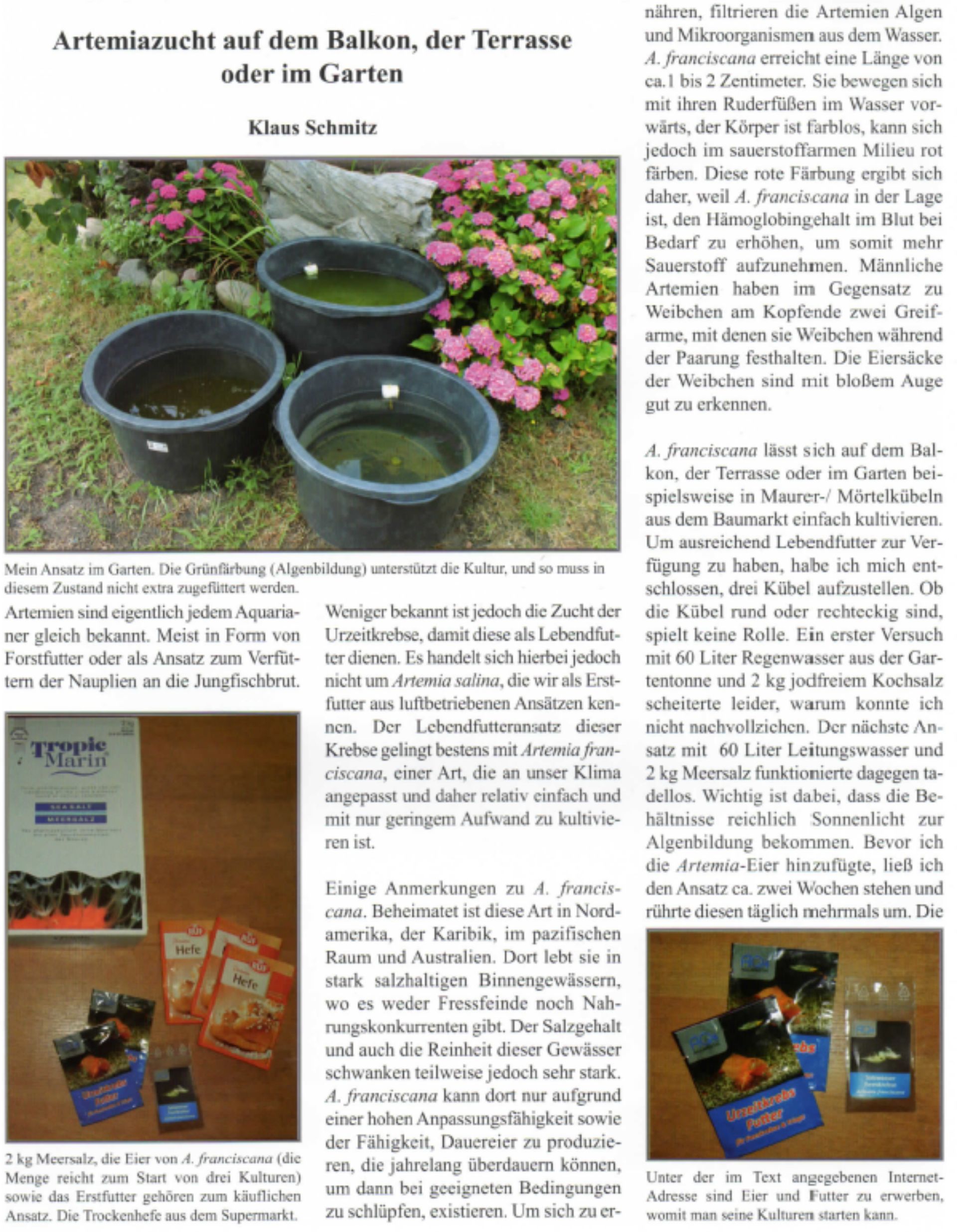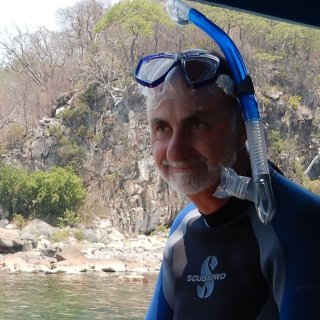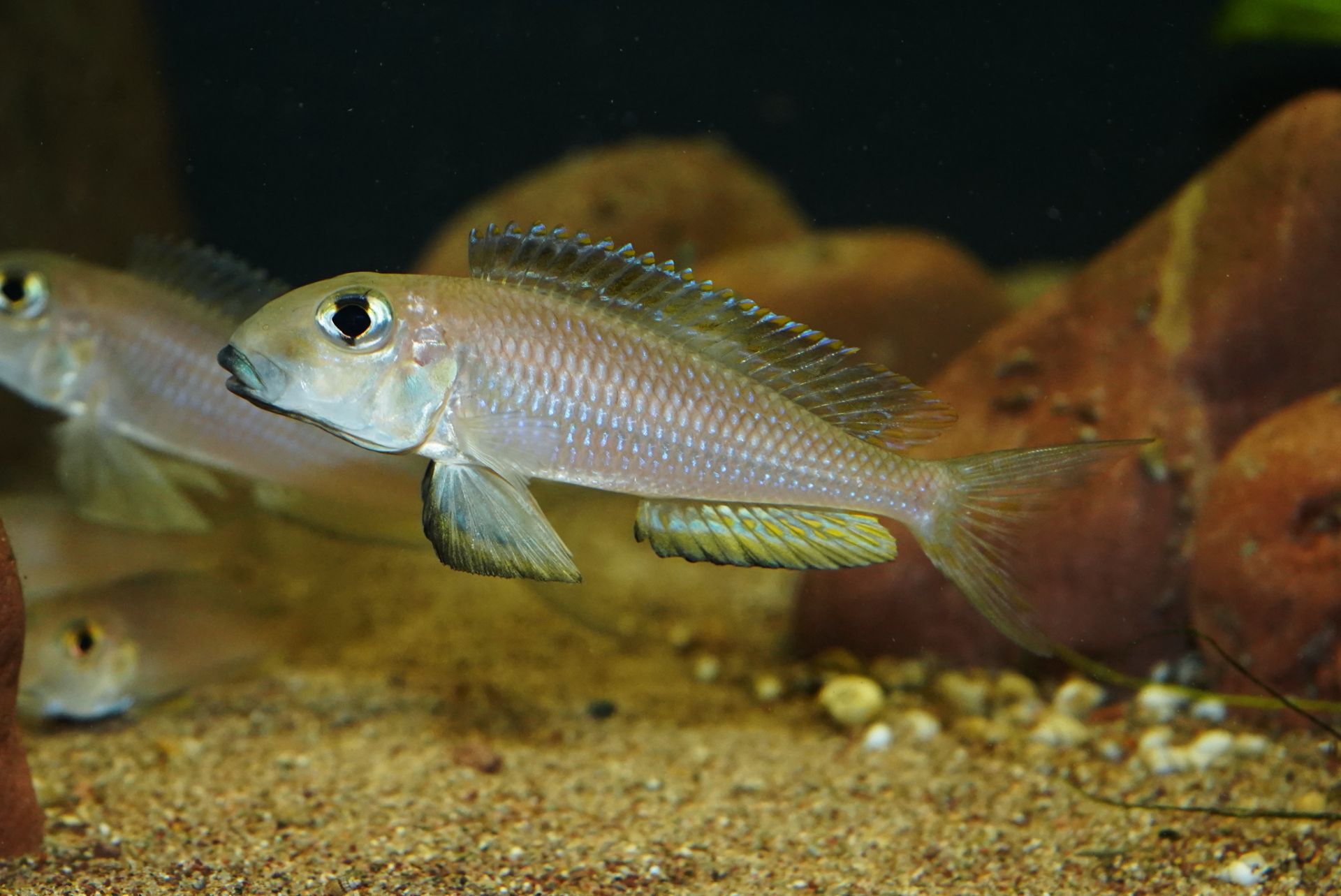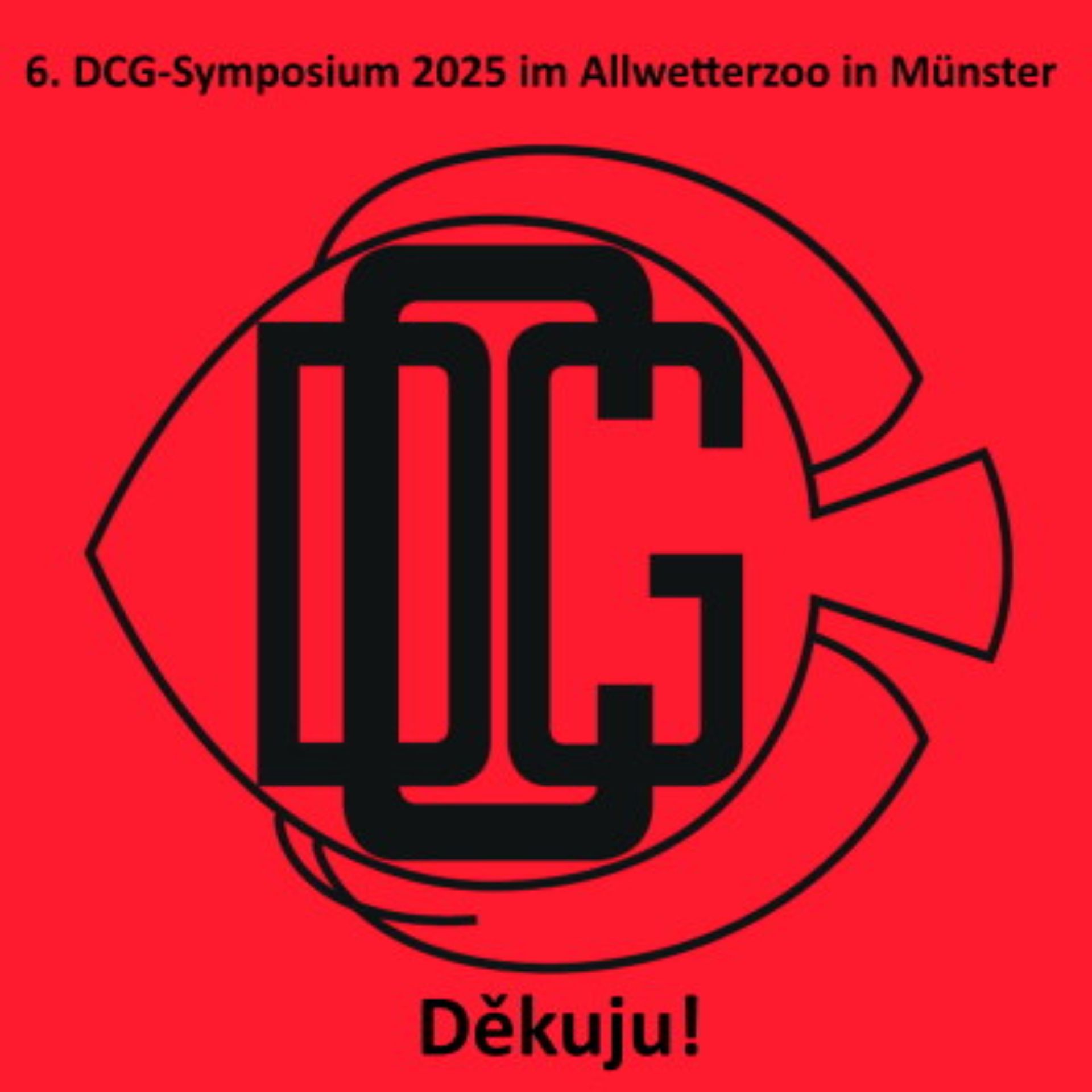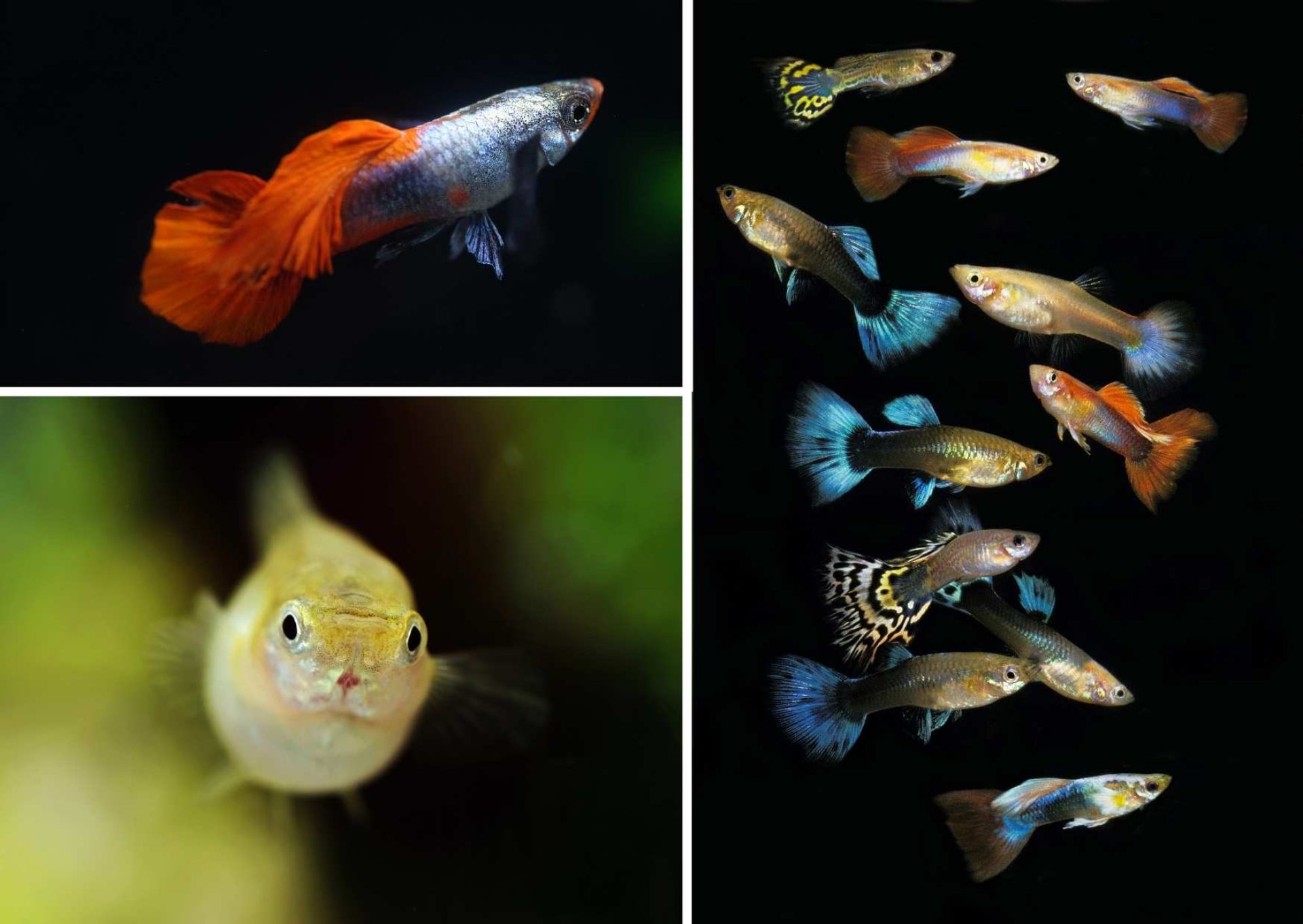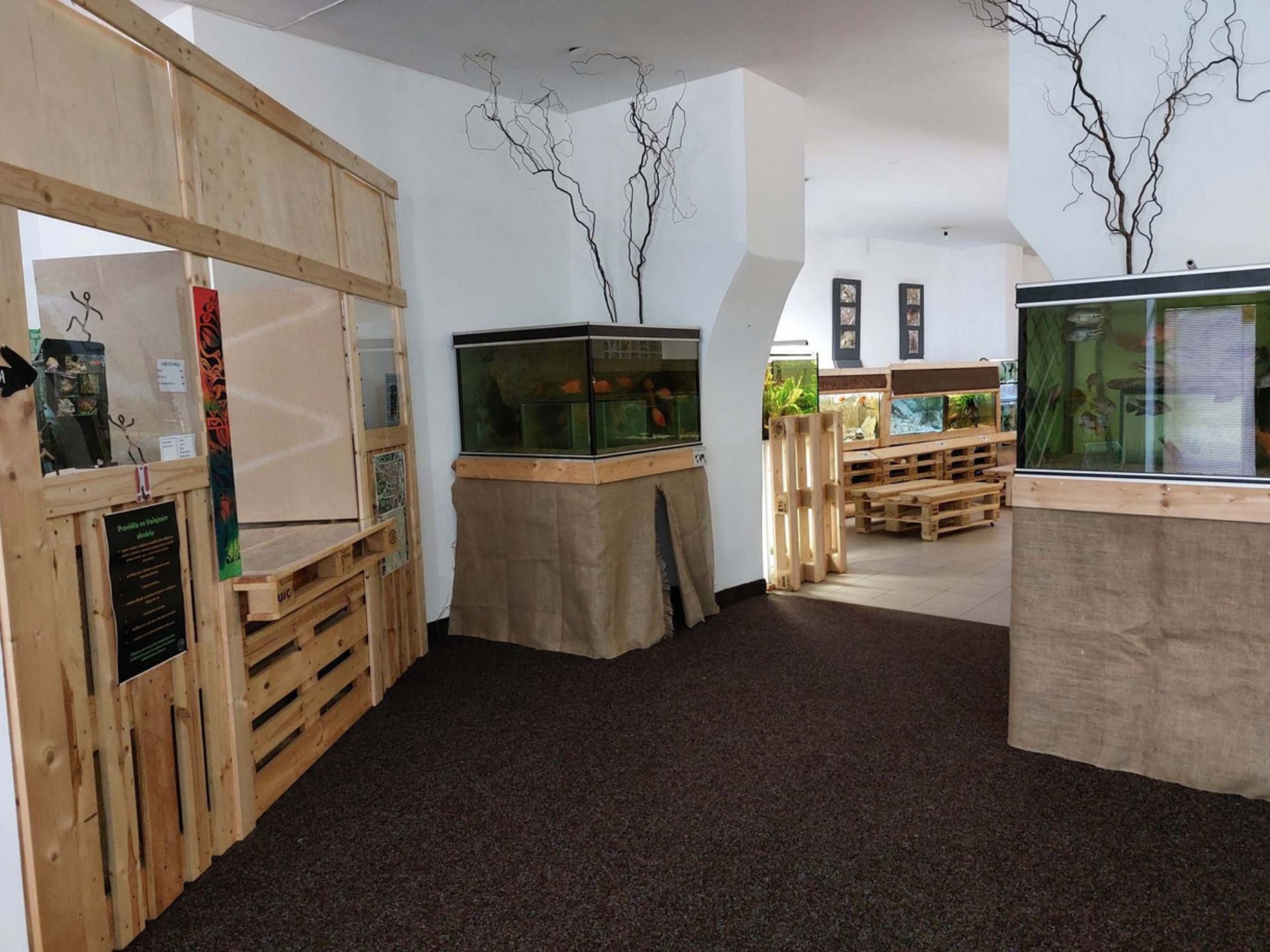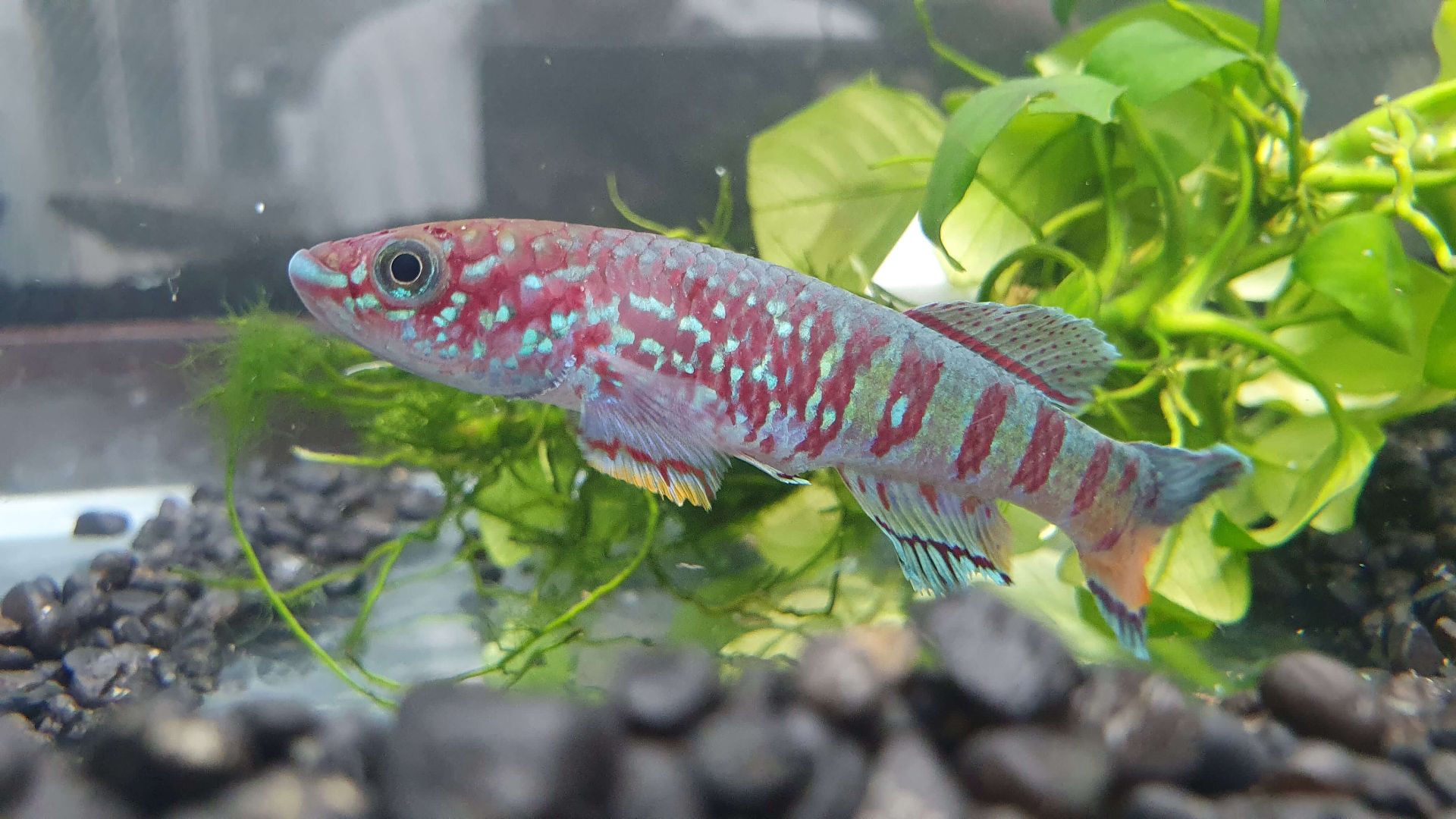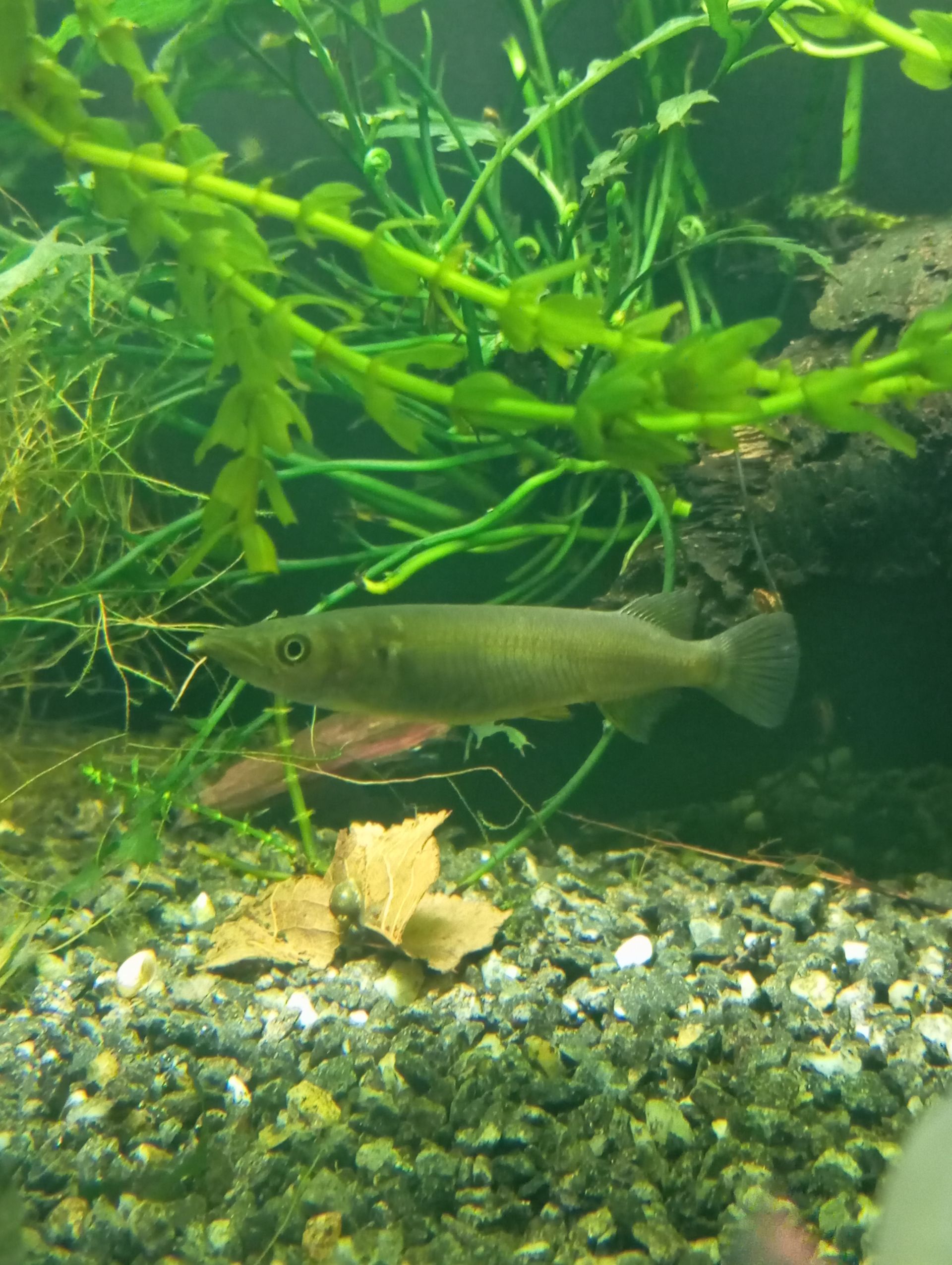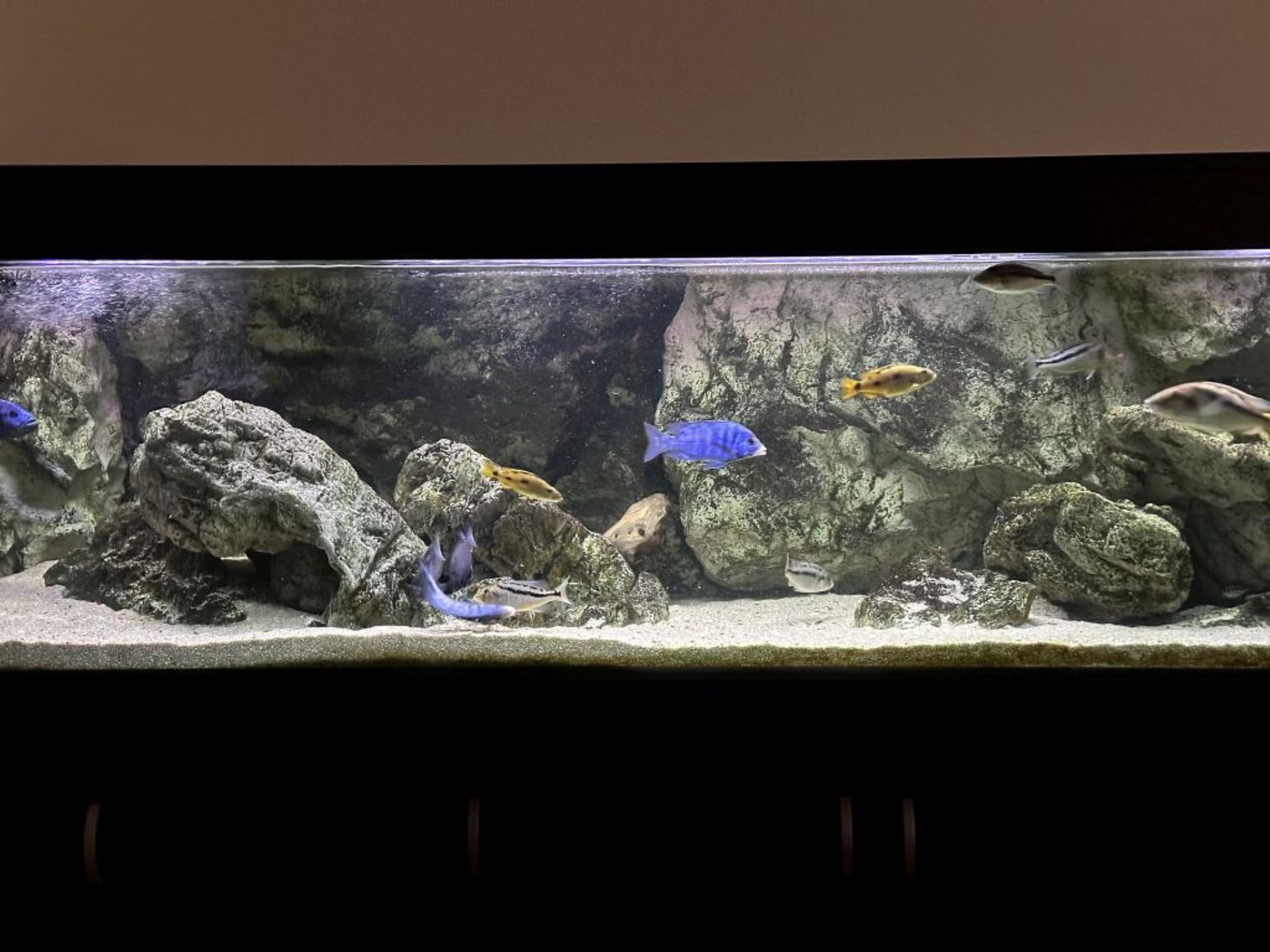The Pantanal (swamp area) is half the size of Germany and the largest contiguous swamp area in the world. It is mostly located in Brazil, with the remaining parts in Paraguay and Bolivia. Since the year 2000, the Pantanal has been a UNESCO World Heritage Site and is protected.
It is home to numerous fish species, many of which are popular in aquaristics. The book about the fish of the Pantanal is unparalleled. Over 660 pages, the fish of this region are presented, with detailed text and an image that almost always shows the respective fish in live coloration. For each species, the morphological characteristics, live coloration, as well as information on occurrence, etymology, type locality, and economic significance are provided.
In addition to the mostly excellent fish images, there are also some habitat photos. A large number of authors were involved in the development. The book is printed in Portuguese. However, with appropriate translation tools, this should not be a problem.
NOTE: Portuguese text!
660 pages
PDF Digital
ISBN: 978 65-81066-05-5
Here is the link:
https://www.cichliden-forum.de/Mittel-Suedamerika/Montagem-livro-Peixes-VERSAO-FINAL-MARCO-2022-ISBN97865-81066-05-5-ONLINE_FINAL-1.pdf
Best regards,
Manfred
With the two volumes by Kai Qvist and Rune Evjeberg, you will receive extensive information and photos of freshwater biotopes and fish from the
rivers, lagoons, and cenotes of Mexico. The books are almost a must for those who are involved with Goodeidae, livebearers, cichlids, and
many other freshwater fish from Mexico or are interested in them.
Volumes 1 and 2 of "A Selection of Freshwater Fish Biotopes in Mexico" include 337 and 241 pages and are packed with detailed information about
the biotopes, water parameters, history of the fish, local communities, and much more.
Anyone with an account at https://de.scribd.com can download the two volumes there for free.
Here is the link to it:
https://de.scribd.com/document/47090…-Mexico-v-2-pdf
Best regards, Manfred
Ein Hallo an alle,
eine interessante Neuerscheinung: "Handbook of Freshwater Fishes of West Asia"
Das „Handbook of Freshwater Fishes of West Asia“ bietet die erste Zusammenfassung der Taxonomie, Verbreitung, Lebensräume und Biologie aller Süßwasserfische zwischen Bosporus, Aserbaidschan, Jemen und Iran. Die Region ist äußerst vielfältig und beheimatet 625 Arten, von denen die meisten endemisch
sind. Viele der Arten sind nur wenigen Spezialisten bekannt, und die Autoren haben 18 Jahre damit verbracht, die bereitgestellten Informationen zusammenzustellen.
Das Buch zeigt nicht nur alle Arten in Farbfotos, die ersten standortbezogenen Verbreitungskarten und den aktuellen IUCN-Schutzstatus aller Arten. Es ermöglicht auch ihre Identifizierung anhand von Bestimmungsschlüsseln und detaillierten Diagnosen, verweist auf viele offene Fragen für die zukünftige Forschung und enthält 1142 Referenzen für weiterführende Informationen. Es vereint die relevanten und maßgeblichen Informationen, die zum Verständnis und zur Erforschung der Süßwasser-Biodiversität in der Region und weit darüber hinaus erforderlich sind, und wird für viele Jahre als Standardwerk und Zeitleiste dienen.
alle Arten in Farbfotos
Verbreitungskarten
aktueller IUCN-Schutzstatus aller Arten
Identifizierung von Fischen anhand von Bestimmungsschlüsseln und detaillierten Diagnosen
Zitat
Freyhof, Jörg, Yoğurtçuoğlu, Baran, Jouladeh-Roudbar, Arash and Kaya, Cüneyt. Handbook of Freshwater Fishes of West Asia, De Gruyter, 2025.
https://doi.org/10.1515/9783111677811
Verlagsort Berlin/Boston
Sprache englisch
Maße 210 x 280 mm
ISBN-10 3-11-167764-8 / 3111677648
ISBN-13 978-3-11-167764-4 / 9783111677644
eBook downloaden (PDF 262 MB):
https://www.degruyterbrill.com/document/doi/10.1515/9783111677811/pdf?licenseType=open-access
Liebe Grüße an alle
Manfred
Warning: Contains old, ancient emigrants from the South of America, representatives of the genus Corydoras.. (female sterbai, female panda, male paleatus).. And African plants Anubias (where to put the nice surplus? 🤭..) They live there only to the end of their days and grow only in a stopover☝️.. So take the subcategory "biotope" with a grain of salt🫠..
The main inhabitant is the male Channa bleheri (somehow turned brown after two years, so probably the brown form), bred by Kuba Lasota, Heiko. Snails Planorbids, Lymnaeids, one lost Clithon, lost and rediscovered Melanoides, Filopaludina..
It is still a low-tech aquarium, where the only technology includes a pumping head from jk animals and an LED tube hsbao retrofit. Occasionally a skimmer jingye, for emergencies when one doesn't want to use tweezers.. But I don't want to get rid of it completely (is that possible?), I make jichu for watering houseplants 😁.. We fertilize with fish waste and maximum long-term NPK fertilizer in the substrate. The used leachate is literally alchemy. The base is Kachu, leaves of Quercus robur, Fagus, Schima, alder cones and leaves, Sphagnum, torf, lotus petals, lotus fruit.... The representatives of the plants growing here are Microsorum, Cryptocoryne, Bolbitis, Najas, Limnophila, Schismatoglottis, my favorite and simultaneously hated Lotus tiger, sometimes red, sometimes green, as it pleases (can be seen in the photo in my gallery, so I'm not making it up..), which was obtained by Jirka Fojtik from Surpan and from whom I also have Schismatoglottis (thanks!), Limna, Rhygoriza (I have it again after 5 years, thanks to Míla Popelka 🍀), and somewhere among all this are still living, just somehow leafless stems of Hydrocotyle leucocephala 😅... And finally, Java and hybrid mosses, Cladophora and Rhizoclonium, which didn't want to grow for a long time .. 👌.. And the lighting conditions themselves? Terrible... But it's growing! 😂
Profile: Exochochromis anagenys (Oliver, 1989)
Size of males: approx. 25-30 cm
Size of females: approx. 20-25 cm
Coloration, Differences:
Males and females are almost equally colored.
Gold yellow with three black spots on both sides.
Males grow significantly larger. With large yellow egg spots on the anal fin and bluish head.
As juveniles, the sexes are very difficult to distinguish.
Minimum tank size:
from 250 x 70 x 50cm, from 1,000l
Diet:
Predator, primarily feeds on juvenile fish that it actively hunts.
In the aquarium, they accept flakes, granules, frozen, and live food.
Habitat in Lake Malawi:
The species is widely distributed throughout the lake and hunts over sandy areas and rocks for juvenile fish.
Reproduction:
Maternal mouthbrooder
My experiences with Exochochromis anagenys (Oliver, 1989)
Keeping in the aquarium:
This species is one of my favorite species from Lake Malawi.
Since these fish are quite large and very active swimmers and must be kept in a harem, the aquarium must have a minimum size of approx. 250 x 70 x 60 cm (approx. >=1,000l).
The tank can be designed as a Malawi transition zone. Larger open sandy areas with rocks or rock piles placed in between. The species requires a larger free swimming space in the tank.
The animals are fish predators, hunting and eating smaller fish in the lake. The offspring of other species in the tank are therefore at least endangered!
The species is best kept as a harem of 1M / 3F. In larger aquariums, larger groups of the animals also work.
Diet in the aquarium:
The fish eat juvenile fish that they actively hunt in the lake. Therefore, a carnivorous, protein-rich diet for the animals is necessary. They accept flakes and granule food. Frozen and live food can also be given occasionally.
Please feed sparingly and with high-quality food (low carbohydrates).
Behavior in the aquarium (my experiences):
The species, where females and males look very similar, is a rather calmer Malawi predator in the aquarium, that gets along well with other species and is not aggressive. During courtship, it digs a small sand pit, usually under or next to a large rock. Here, the behavior of the male changes. The calm hunter becomes a somewhat rough character, which defends a minimum of 200 cm length in the aquarium fiercely. Moreover, he hunts his females very persistently, intensely, and until they are ready to lay eggs and swim into his pit. The courtship and hunting can last several days.
I have been able to obtain about 50 juvenile fish per brood several times, raise them, and give them away. The loss was very low, only about 3-5 juvenile fish on average.
The females brood for about 4 weeks and then release the fry at about 10-12 mm in size. The little ones are not further cared for and are left to fend for themselves from the first day after being released.
The fish are gold yellow in color and have three black spots on the left and right sides, which they can completely hide depending on their mood, making them entirely gold yellow. The dominant male also becomes bluish on the head, which then transitions into gold yellow. In my opinion, they are extremely beautiful and elegant fish.
Co-habitation in the aquarium:
A stocking with larger, not too sensitive fish must be chosen in the tank. However, the other fish should not be too rough and aggressive.
The species is, like many Malawi predators, quite a big "sensitive" fish, and they do not like changes in stocking, setup, or constant attacks from rougher other fish, reacting quickly with stress and taking it badly. This can possibly lead to diseases if it becomes prolonged and too severe.
Due to their colors and behavior, they are a real eye-catcher in any non-Mbuna Malawi aquarium. Even in a larger group in a suitably designed species tank, they are a highlight.
My conclusion:
A very beautiful and also special Malawi predator species. With their gold yellow, shiny coloration, the bluish head of the males, and their slim, torpedo-shaped body, they represent a true highlight in the aquarium.
They are very fast swimmers, so one has to be careful when opening the aquarium that they do not jump out.
As mentioned, one of my favorite species from Lake Malawi. I have been keeping them for many years. However, one must ensure that they obtain good, stable offspring; unfortunately, there are also many overbred fish of this species available on the market! With which one usually only encounters significant problems in the aquarium! This can lead to large losses and casualties that cannot be remedied. There are also completely silver-colored fish of the species, which I do not find as appealing. The species is rarely found in Lake Malawi, and wild catches hardly come from Africa anymore.
Populace druhu v jezeře Malawi:
Placidochromis phenochilus (Trewavas 1935):
- Chesese
- Chirwa Island
- Mdoka
Placidochromis sp. ‚phenochilus tanzania:
- Lupingu
- Makonde
Profil - Placidochromis phenochilus Mdoka White Lips
Velikost samců: cca 18-21 cm
Velikost samic: cca 14-17 cm
Zbarvení, rozdíly:
- Samci a samice jsou téměř stejně zbarveni, tmavě modří s sytě černomodrými pruhy.
- Samci jsou výrazně větší, vyšší se strmějším čelem.
- U mláďat jsou pohlaví jen velmi obtížně rozpoznatelná.
Velikost akvária:
od 200 x 60 x 50 cm, čím větší, tím lepší!
Potrava:
predátorská ryba s masitou stravou, vločky, granule, mražené a živé krmivo
Biotop v jezeře Malawi:
přechodová zóna s velkými samostatnými kameny a velkou volnou písčitou plochou
Rozmnožování:
maternální tlamovec (samice inkubuje jikry v tlamě)
Moje zkušenosti s Placidochromis phenochilus Mdoka White Lips
Chov v akváriu:
- Jelikož tento druh dorůstá poměrně velkých rozměrů a měl by být chován ve skupinách, musí mít akvárium minimální rozměry 200 x 60 x 50 cm, čím více ryb, tím větší akvárium.
- Nádrž by měla být uspořádána jako přechodová zóna Malawi. Větší volné písčité plochy s, mezi nimi umístěnými, velkými kameny. To vyhovuje způsobu příjmu potravy tohoto druhu. Tyto ryby jsou pronásledující, které plavou za většími druhy, jež prosévají písek při hledání potravy, a požírají potravu vyplašenou a zvířenou v písečném oblaku.
- Nejlepší je chovat skupinu cca 3 samci / 5 samic. To odpovídá potřebám těchto velmi sociálních ryb. Možný je však i chov v harému 1 samec / 3 samice. Vždy je třeba brát ohled na velikost dostupného akvária.
Strava v akváriu:
- Ryby požírají drobné bezobratlé, hmyz, červy atd., které se nacházejí v písku nebo jsou zvířeny rybami, které před nimi plavou a ryjí v písku (tzv. "sand-sifters"). Je tedy nutná karnivorní strava. Přijímají vločkové a granulované krmivo. Mražené a živé krmivo však může být také občas podáváno.
- Pozor, tento druh snadno ztuční, což může vést ke zdravotním problémům. Krmte prosím střídmě a kvalitním krmivem (s nízkým obsahem sacharidů).
Chování v akváriu (moje zkušenosti):
- Ryby, když jsou umístěny jako mladé, jsou dlouho velmi mírumilovné a pohybují se ve své skupině. Během období tření si však tento druh zabírá teritoria, většinou větší, ploché kameny, které pak velmi vehementně brání. Když samci dospějí a dvoří se, velmi agresivně napadají jak příslušníky vlastního druhu, tak zejména cizí ryby, i když jsou větší.
- Ostatní osádka by neměla být příliš agresivní, ale měla by být dostatečně robustní.
- Ryby mohou měnit své zbarvení od téměř světle modré po tmavě modrou, se sytě černomodrými pruhy. To se děje v závislosti na jejich náladě; dominantní samec je často sytě tmavě modrý se sytě černými pruhy.
Společně ve stejné nádrži:
- Je třeba zvolit osádku s většími, robustními rybami v akváriu (např. Non-Mbunas, malawijští dravci). Optimální by byla například velká cichlida, jako je Fossochromis rostratus, jako doprovodný druh, což by ovšem vyžadovalo ještě větší akvárium.
- Díky svým barvám a chování jsou tato ryby nepřehlédnutelné i ve vhodném jednodruhovém akváriu..
Moje závěry:
Velmi krásný a také zvláštní druh Non-Mbuny z jezera Malawi, který se svým nádherným stínovaným, lesklým modrým zbarvením a bílými, tlustými pysky stane skutečným vrcholem každého akvária. Tyto ryby mají působivé, majestátní chování ve větší skupině. Velmi se mi líbí a chovám je u sebe v akváriu ve stylu Malawi už mnoho let. I když občas dochází k divočejším potyčkám, při kterých se otřásá krycí sklo.
A bit overgrown so you can't see the shrimp and fish, but I still like how overgrown it is like a jungle. I'll let it grow more so it can be even more overgrown for the shrimp and fish; that's the only good thing.
Starting tomorrow, according to the organizers, "the largest European exhibition of parrots, pheasants, ducklings, reptiles, aquarium fish 🐠🐟🦐, and smaller mammals with arrangements of exotic plants and trees" will take place at the exhibition grounds in Lysá nad Labem.
I visited the exhibition last year, where aquarium fish were significantly represented, thanks in part to the Rychnov association Akva-tera, which had a beautiful display at the Exotika 2024 exhibition. Right across from them was a very impressive terrarium display from REPTI PLANET, who will also be at the exhibition this year.
Not only aquarium and terrarium exhibits are worth attention, but also other animals, especially ornamental birds, which are represented in a wide variety, and additionally, the Czech Republic Championship for KPEP scored birds will take place. At the Exotika exhibition, you can of course consult with all the breeders and discuss your questions with them.
I therefore recommend visiting the Exotika exhibition, and I plan to attend it myself this year as well.
Habitat
- Transition zones (or Ecotones) between sand and rock biotopes at depths of 10 to 50 meters.
Characteristics
- Size: The fish reach a maximum length of about 8 to 10 cm.
- Sexual Dimorphism: Males and females are visually difficult to distinguish, with males tending to be slightly more robustly built.
Aquarium Keeping
- Aquarium Size: The species is best kept in a group from which pairs can form. An aquarium with a minimum volume of 300 litres is recommended for keeping a group of 6 to 8 animals. Tank length 150 cm.
- Setup: Substrate of fine, round-edged river sand. A few stones to serve as territorial boundaries.
Diet
- Natural Diet: In the wild, they feed on small crustaceans living in the sand, which they sift out by filtering the sand with their gill rakers.
- Aquarium Food: In the aquarium, the food should be varied and consist of a mixture of small crustaceans, insect larvae (e.g., red mosquito larvae), dwarf shrimp, and Tubifex. Special dry food can also be supplemented.
Breeding and Parental Care
- Xenotilapia papilio is a biparental mouthbrooder, meaning that both parents share the brood care.
- The female lays the eggs on a flat stone, where they are fertilised by the male. The female then takes the eggs into her mouth. After about 11 days, the male takes over all or some of the fry to continue the care. The fish practice mouthbrooding for up to 6 weeks after the initial release of the fry.
With my contribution I would like to provide suggestions for home Artemia cultivation!
Životní prostředí
• Široké rozšíření. Většinu roku se vyskytuje na písčitých dněch v hloubkách 3-40 m, během období rozmnožování v přechodové zóně.
Vlastnosti
• Velikost: Xenotilapia boulengeri dosahuje maximální délky až 20 cm, samice max. 15 cm.
• Vzhled: Ryba má štíhlé, protáhlé a mírně zploštělé tělo. Zbarvení je převážně šedé až hnědošedé. Zvláštním znakem je světle modrá linie podél postranní čáry. Na žaberních víčkách se mohou objevit světle modré, žluté nebo zlaté skvrny. Hřbetní a řitní ploutve často mají modrý nádech a žlutý okraj.
• Pohlavní rozdíly: Dospělí samci jsou větší než samice a mají tmavé okraje na řitních a břišních ploutvích. Během období rozmnožování vykazují také teritoriální chování.
• Postranní čáry: Zvláštností tohoto rodu je, že má tři postranní čáry: jednu na předním těle paralelně k hřbetu, jednu ve středu zadního těla a jednu na ocase.
Životní styl a chování
• Sociální chování: Xenotilapia boulengeri je relativně mírumilovná ryba, která se nejlépe chová ve skupině 8 až 10 jedinců. Během dne se často pohybují ve stádech a prohledávají písek za potravou.
• Rozmnožování: Jedná se o maternální tlamovku. Samci staví až 20 cm vysoké, půlkruhové a na jedné straně otevřené pískové hnízda. Doba rozmnožování trvá přibližně 3 týdny. Samice uvolňuje až 50 relativně malých mladých ryb a dále se o ně nestará.
• Strava: Ryby se živí převážně malými bezobratlými, jako jsou malé krevety a korýši, které filtrují z písku.
Chov v akváriu
• Akvárium: Vzhledem k jejich velikosti a sociální struktuře by mělo mít akvárium minimální délku 150 cm pro malou skupinu 6-8 jedinců.
• Zařízení: Protože ryby prohrabávají písek, je nezbytné mít několikacentimetrovou vrstvu jemného písku jako substrát. Do akvária je dobré umístit jednotlivé kameny jako hranice teritoria.
• Vodní hodnoty: Teplota vody by měla být mezi 23 °C a 26 °C, pH v alkalickém rozmezí mezi 7,5 a 8,5. Karbonátová tvrdost 15-18 °dH.
• Krmění: V akváriu je možné je krmit vhodným živým krmivem (vodní blechy, Cyclops, Artemia), mraženým krmivem, vločkovým krmivem nebo krmivem ve formě tablet.
The DCG (Deutsche Cichliden-Gesellschaft e. V.) warmly welcomes Linda from ForAquarist.com as our first Czech member! Dear Linda, thank you so much for your tremendous commitment.
For the DCG, this is a truly gratifying development and an honor to welcome members from the Czech Republic. We are very much looking forward to welcoming more Czech members. The DCG is ready to further deepen and expand this newly formed Czech partnership.
We look forward to future online get-togethers. It would, of course, be wonderful and highly appreciated if we could inspire Czech speakers to give an online presentation—that would be perfect!
This Wednesday, there will be another online presentation at the DCG Cichlid Roundtable about EU animal welfare law, the status of the Positive List, and related topics. The speaker is Dr. Martin Singheiser (BNA e. V.).
Everyone is cordially invited to attend! As always, subtitles translated into 40 languages will be available.
Links and dates at: https://kalender.digital/Vivaristik-Kalender
Best regards to all Czech aquarists.
DCG i. V. Manfred (PR)
The 6th symposium at Allwetterzoo Münster has come to an end on Sunday, 19 October 2025. The event was a real highlight and delighted all participants greatly.
The very special thing at this DCG symposium was the participation of two Czech aquarists. That was one of the biggest highlights!
The DCG (Deutsche Cichliden-Gesellschaft e. V.) and I would like to thank you very much for the visit of Linda Vlachová and Adam Molin at our 6th DCG Symposium.
It pleased the DCG board, all participants and also me very much to obtain a contact with Czech aquaristics and to be able to speak directly personally with two representatives from the Czech Republic and exchange ideas.
There were three days of really lively exchange on interesting topics. Linda and I have already developed some ideas and plans for future joint activities and projects.
A very big thank you and a big compliment to Linda for her two lectures at the DCG Symposium, about “ForAquarist.com” and Czech aquaristics.
That impressed all participants very much and also excited them.
Also many thanks to Adam, who undertook a long journey to be at the DCG Symposium.
Linda and we are of the opinion that we want to promote a further, more intensive exchange and will do so.
Of course, all Czech aquarists are still warmly invited to our DCG events and online lectures.
All online lectures are readable with real-time translated Czech subtitles.
Further such events in the Czech Republic and Germany would be real “aquaristic lighthouses” that are currently quite unique; we are already looking forward to it.
Best regards to Linda, Adam and all other Czech aquarists.
from
the entire DCG board
the Cichliden-Forum.de
and a very big thank you from Manfred (DCG PR and the Cichliden-Forum.de)
The Plzeň Aquarists Association IRIS invites all aquarium enthusiasts to the autumn aquatrade.
November 15, 2025 (Saturday)
📍Location: Dormitories of the SPŠ Transport, Karlovarská třída 99, Plzeň, tram stop no. 4 U Družby
🛍️ Event Program (9:00 AM – 11:30 AM)
We invite you to the traditional aquatrade, where you will find:
- Quality fish
- Live plants
- Feed
- A wide range of aquarium supplies and more!
💡 Consulting Service
Take advantage of the consultation opportunity! Members of the IRIS association are happy to provide expert advice and assist with your aquarium-related inquiries.
Orders for sales tables by November 13, 2025 at mobile 603 231 494 or info@irisplzen.cz
Those interested in membership in our association IRIS, historically the second oldest aquarium association in the Czech lands, can sign up at this event. We look forward to welcoming you among us!
Spolek AQUARIO & spol. n.o. pořádá akci zaměřenou na moderní akvaristiku s cílem pozvednout současnou úroveň chovu a nastolit vyšší etické a kvalitativní standardy. Organizace klade důraz na přirozené podmínky a ochranu chovatelů před negativními vlivy překupníků.
Key Information about Exhibitions
Výstava striktně dodržuje mezinárodní kritéria pro pohodu ryb a kvalitu chovů:
Nádrže a objemy: Soutěžní nádrže splní mezinárodní kritéria IGHC. Výstavní objemy se řídí normou CITES (1 cm ryby na 1 l vody), a prodejní nádrže budou velké (cca 100 l), ne malé kóje.
Péče o ryby: Nádrže budou tepelně regulovány. Vody nebudou chemicky upravovány; chemie se použije jen izolovaně a po dohodě s chovatelem.
Kondice ryb: Vystavovány budou pouze chovné, dospělé ryby v kondici.
Kontrola: Všechny expozice projdou veterinární kontrolou s protokolem.
Garance: Všechny vystavené ryby budou na požádání vráceny majiteli.
Výzva k Účasti a Možnosti pro Chovatele:
AQUARIO vyzývá všechny akvaristy – profesionály i amatéry – k účasti. Akce slouží k porovnání chovů, získání vlastní reference a vzájemné podpoře v oboru. Účast je vnímána jako pomoc při pozvedání celkové úrovně akvaristiky v ČR.
Účastníci soutěžní sekce získají pamětní diplom.
V rámci výstavy je možná vzájemná výměna chovných variací a prodej ryb.
Účastí podpoříte snahu o návrat ke kvalitním chovným standardům a přispějete k rozvoji oborových vztahů.
Public aquarium in Česká Lípa, also known as Fish Zoo, offers a unique combination of education, relaxation, and visual experience with tropical fish and aquatic ecosystems. It is a great place for individual, family, or school visits.
What you can see:
- over 80 species of tropical fish from various parts of the world live in the aquariums, newly you will see species such as Hartweg's cichlid (Vieja hartwegi) or stone acara, wide-headed acara,
- the total volume of the aquariums exceeds 8,000 liters of water
- the aquariums are arranged to closely mimic natural habitats, especially of African and South American waters
- tours can be guided, which helps to better understand the biology, ecology, and technical aspects of the aquarium's operation
- barrier-free access is ensured, allowing entry for people with mobility limitations or parents with strollers
If you decide to visit the aquarium, you will certainly appreciate the personal approach and engaging storytelling about each aquarium and its inhabitants from the enthusiastic aquarist and exhibition operator Mr. Jasanský, which will enrich the very interesting experience of observing many species of attractive fish.
For children from Česká Lípa, it is also newly possible to attend the aquarist club "Aquarist in Harmony with Nature".
The public aquarium in Česká Lípa is not immune to economic pressures. In recent years, it has faced a significant increase in costs (e.g., energy, maintenance of technology) and therefore had to announce a public collection to support its operation. That is why it would be great if you decide to support the Public Aquarium, whether by visiting or making a financial contribution, which will allow this unique project to continue in the coming years.
Address of the Public Aquarium: Prokopa Holého 1287/2 in Česká Lípa (link to the map - https://mapy.com/s/pobehaheku).
Contact information:
Phone: +420 603 204 386
E-mail: akvarium.jasansky@seznam.cz
Web: www.verejneakvarium.cz
Source of photos: verejneakvarium.cz
Let yourself be tempted by a great aquarium exhibition in Rychnov n. Kněžnou organized by the Akva-tera association, now for the 46th time.
You will see newly reconstructed spaces and a slightly different take on the exhibition. It is definitely worth it. To start, we attach a few photos as a teaser.
More information can also be found here (https://www.foraquarist.com/novinky/311-akvarijni-vystava-akvaexpo-13-az-21-zari-2025-v-rychnove-nad-kneznou).
I had a moment to stop by the International Killifish Exhibition at the Botanical Garden in Prague, which starts today. Although some aquariums are still empty, many beautiful killifish can already be seen (for example, in the photos, Fundulopanchax sjostedti - Blue Killifish in the "Red Dwarf" variant and Aplocheilus lineatus - Golden Striped Killifish). In addition to the exhibition, other aquarium fish can also be seen in several permanent aquariums (also in the photos), which are very well done.
Entry to the exhibition is practically free; you only pay for entry to the Botanical Garden, which is 100 CZK. The killifish exhibition is definitely worth a visit! 😎
Exhibition Annotation:
The International Killifish Exhibition takes place in Prague from September 11 to 14, 2025, at the Botanical Garden of Charles University at Na Slupi 16. The exhibition will showcase beautifully colored aquarium fish with unique life cycles and behaviors, including demonstrations of some species that can adapt to life on land. On Sunday, September 14, a traditional market will take place, where visitors can purchase fish and try their breeding.
More information is also available here: https://www.foraquarist.com/novinky/358-halancici-dobyvaji-prahu-mezinarodni-vystava-a-burza-od-11-do-14-zari-2025
A new addition to the breeding of halfbeaks. During my visit to the Papík company in Dříteč, I brought home two new halfbeaks.
Hello,
here are some pictures and inspirations from my Malawi Lake aquarium, where I keep Malawi predators and non-Mbunas.
Here you can see:
Exochochromis anagenys, Aristiochromis Chrisityi, Copadichromis borleyi Kadango, Mylochromis mchuse, Mylochromis epichorialis,
Nimbochromis fuscotaeniatus, Placidochromis phenochilus Mdoka "White Lips", Protomelas taeniolatus Boadzulu, Stigmatochromis tolae
If you have any questions, feel free to contact me.
Best regards, Manfred
